Trends




key issues that should be on the agenda





key issues that should be on the agenda
Miele’s new Generation 7000 appliances feature refined design and pioneering technology. These intuitive appliances integrate purposeful innovation for a completely new kitchen experience.
Miele. Immer Besser. | Discover more at mieleusa.com

CEO Andrew Schofield
Group COO Joe Woolsgrove
Creative Director Tom Vince
Data & Insights Director Jaione Soga
Editor Libbie Hammond

Assistant Editor Mary Floate
Content Editors Daniel Baksi, Alex Caesari, Danielle Champ
Editorial Administrator Amy Gilks
Managing Art Editor Fleur Daniels
Art Editors Paul Gillings, David Howard, Charlie Protheroe, Lee Protheroe
Artwork Administrator Rochelle Broderick-White
Sales Director Alasdair Gamble
Project Director Philip Monument, Joy Francesconi
Head of Content Management Adam Blanch
Head of Global Media Programs Mark Cawston
Project Managers Michelle Fontaine, Jo-Ann Jeffery, Lauren Proulx
Content Managers Victoria Burke, Mark Cowles, Valentina Forero, Melanie Joyce, Tarjinder Kaur De Silva, Wendy Russell
Media Sales Executives Mike Berger, Jessica Eglington, Will Gwyther, Reid Lingle, Sam Surrell
General Manager Florida Division Ryan Finn
Social Media Co-ordinator Rosie Clegg
IT Support Iain Kidd


Administration Natalie Fletcher, Rory Gallacher, Ibby Mundhir
© 2022 Finelight Media Group
Corporate Head Office
Cringleford Business Centre, 10 Intwood Road. Cringleford, Norwich NR4 6AU U.K.
T: (312) 854-0123 T: +44 (0) 1603 274130

US Office
2240 West Woolbright Road, Suite 402 Boynton Beach. FI 33426
T: (561) 778-2396
Hello and welcome to the November issue of Retail Merchandiser. Ecommerce certainly hasn’t slowed down as a topic of discussion in our pages not least because, as Aditi Pany, Founder of Qalara puts it, ‘The growth of ecommerce has had implications throughout the entire ecosystem of retail.’ Dan Baksi from the RM team spoke to Aditi to gain her unique insights into online developments and the changing way that consumers want to source and purchase products. For the full story visit page 14. In her interview Aditi referred to ‘supply chain transparency’ – the supply chain gets more attention from Wayne Snyder in his feature on page 10. We also look at sustainability (page 6) where Eric Alam writes about capitalizing on consumer demand for greener suppliers. Is that a trend you’re following? Our

lh@finelightmediagroup.com







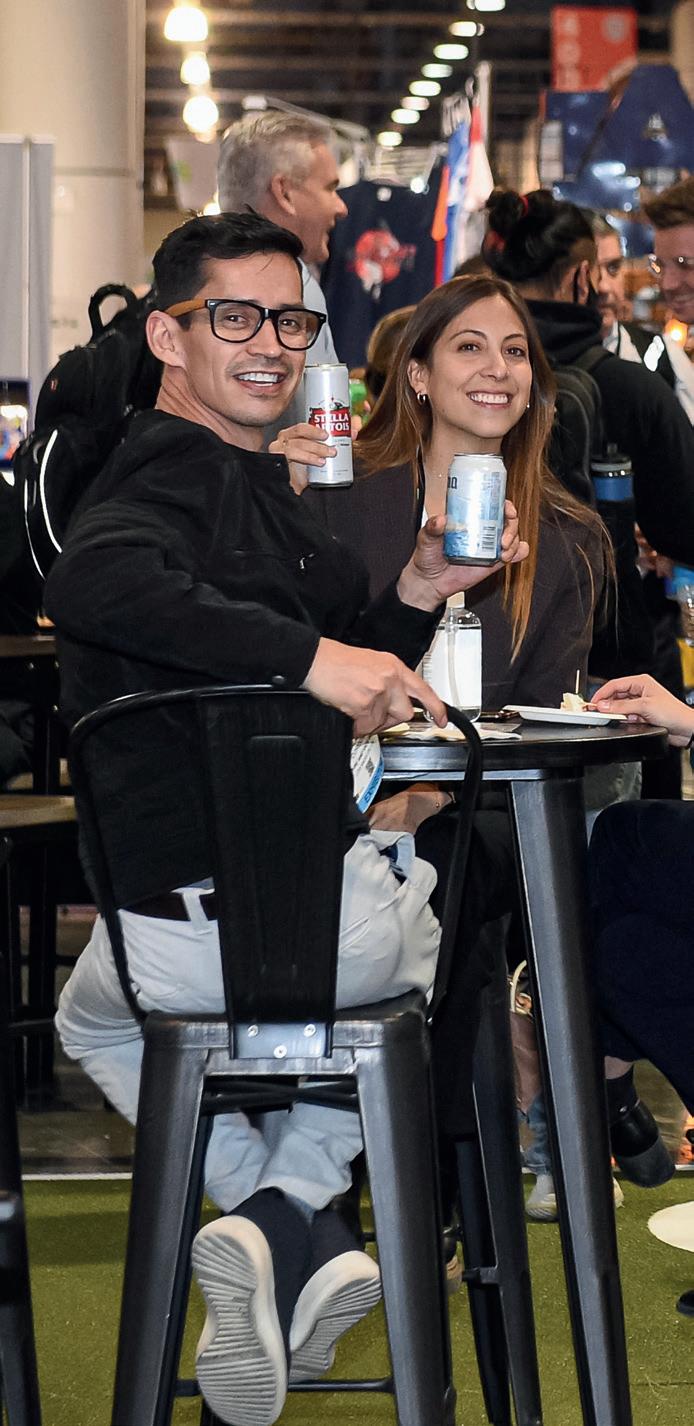



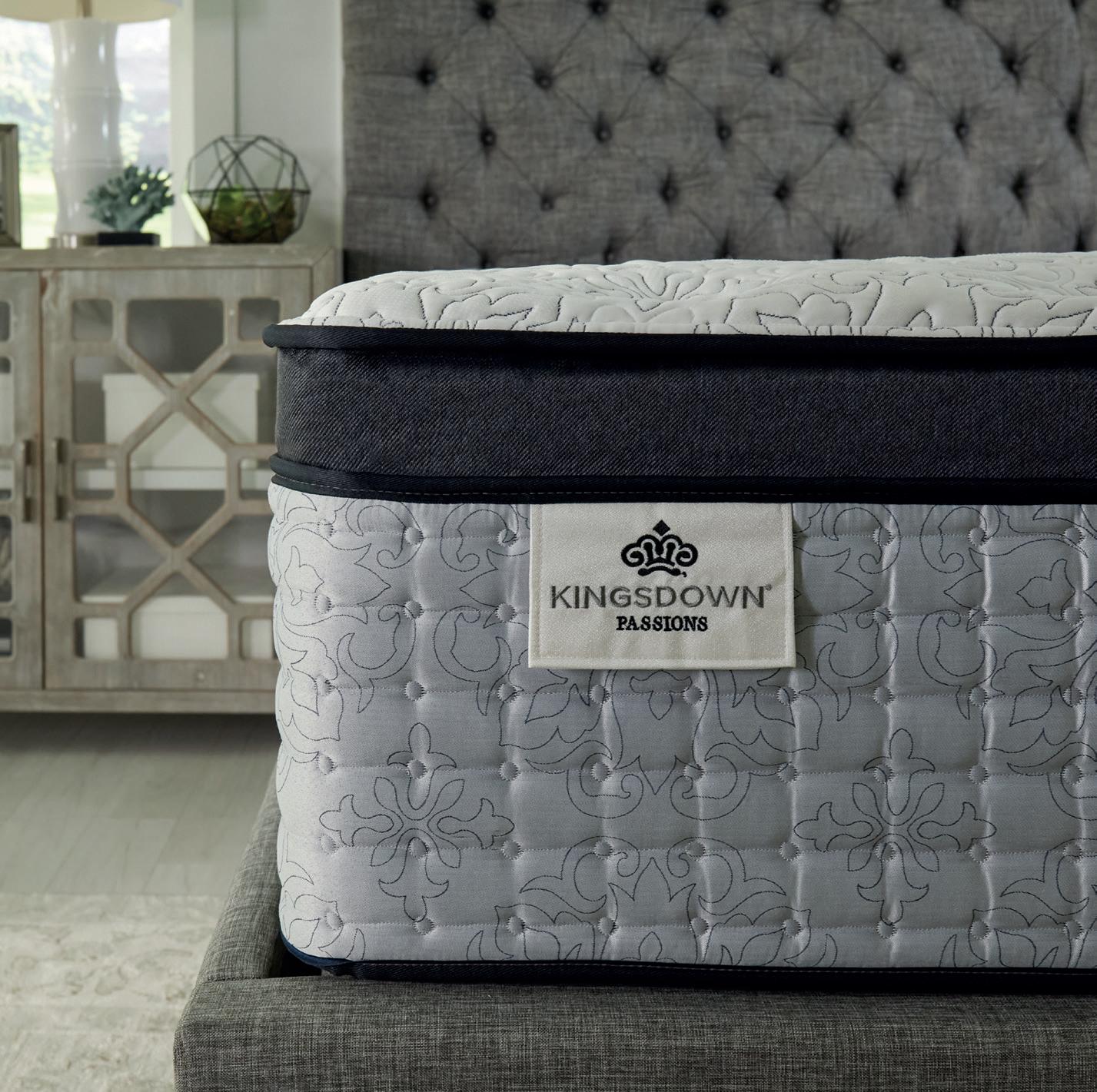

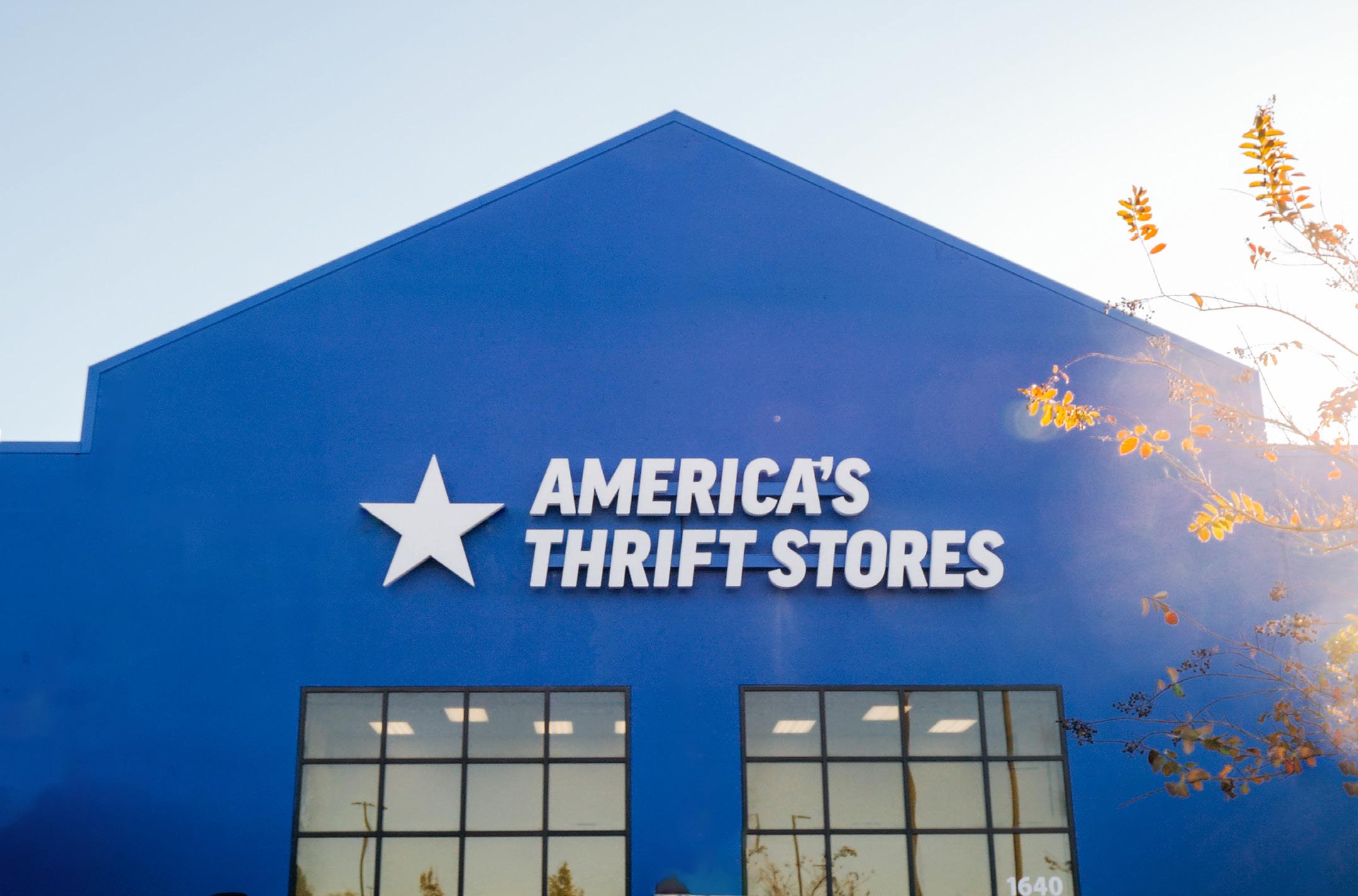


What drives consumer buying decisions at retail?
Packaging? Shopping environment? Brand recognition? Customer Service?
Of course.
But increasingly, a new hurdle has been raised by much of the buying community –what does this brand, this store believe? Are they part of the problem or are they working to be part of the solution?
By Eric AlamConsumers have never had so many buying options. Isn’t it logical that when confronted with multiple choices, new buying criteria/justifications will rise in importance as consumers seek to find a comfort level with the buying decisions they make?
Anyone with a news feed knows it’s ultimately consumers who are driving a transformation of the energy grid from its traditional fossil fuel-based approach to a brave renewable world.
Consumers want to buy from greener sources –how can retailers react?
Note: Respondents who did not give an answer are not shown. Source: Survey conducted Jan. 24-30. 2022 “Americans Largely Favor U.S. Taking Steps To Become Carbon Neutral by 2050 PEW Research Center

Politicians, regulators, corporate influencers of global brands, investors and, of course, the media are leading the charge to a renewable energy-based future. Why? Because they are all in the same business: Predicting, shaping and responding to consumer attitudes and actions.
The argument of how much of this growing consumer preference for brands that embrace a sustainabilitybased philosophy is being driven by outside factors and influencers, can be had in another space. The cause is less important to the bottom line of retailers than the reality of what has arrived on their doorsteps and home pages.
All of us in any form of sales are faced with the perpetual dilemma... the customer’s perception is my reality.
No one wants to argue that a cleaner environment, healthier planet, fair work practices and a sensitivity to underserved communities is bad thing.
The important questions for the retail community are:
■ How do I capitalize on this trend?
■ How do I respond when my biggest consumer products’ brands are telling me that I need to contribute to their sustainability objectives if I want to continue to be part of their supply/ distribution chain?
If this sounds cynical, it is not meant to be. Rather it’s a recognition that consumer buying decisions are the life blood of retailers, and differentiation is the only path to creating brand awareness in an unprecedentedly chaotic environment of consumer choices.
■ Establish sustainability as a core value for your organization – consumers, suppliers and employees are looking for reasons to believe
■ Define the low hanging fruit in your operations that will garner demonstrable sustainability wins and credibility
■ Define criteria for these actions that will allow you to share your wins with your stakeholders
■ One of the most visible, easiest and immediate impacts can be switching to renewable energy to power your operations
■ Assess other aspects of your business and stakeholder demands to address packaging and brand promotion of other sustainable-oriented suppliers and products
■ Evaluate your employee diversity score and seek opportunities promote a healthy culture and work environment
Revamping business processes and changing culture are complex and long-term undertakings. Making the decision to switch to renewable energy is not.
Russian aggression in Ukraine and the upheaval it has caused in energy markets worldwide has had an interesting effect on energy decisions:
The traditional green premium is a minor aspect of overall energy cost. In other words, the impact of finding the right renewable energy product for your operations is cheaper now than it has ever been.
The energy market is complex, but the right solutions can be simple, impactful and affordable. No action a retailer can take will be more visible than promoting a store/website/supply chain is powered by 100 percent renewable energy from a local wind, solar or hydro generator. You do not need to build your own wind farm, commit to a 15year contract for more volume than you can consume or settle for questionably impactful green offsets. Nor do you have to overhaul your rooftop or parking lot.
Solutions exist in the market that will allow you to promote the answers to the following key questions that will resonate with your consumers, employees and suppliers:
■ Where is my green power sourced?
■ What makes it green?
■ What impact did my purchase make?
To find out more, talk to your energy provider or consultant, or find a company that focuses on your needs and objectives.
Transformation at a macro level is a long journey. But the first steps can be easy, and the impact they make on culture, values and consumer perception can be profound. Given the power and velocity behind the sustainability movement and the differentiation opportunity it creates to capture the hearts, minds and actions of customers, employees and investors cannot and should not be ignored.

Sustainability is about much more than renewable energy. It is a commitment to what’s become increasingly more important to your buyers. It starts with an action plan that asks how do I change? How do I start? How do I communicate that we are committed to this path? The first steps create a foundation from which to build. The first decisions set the stage for demonstrating a commitment that will fuel the long-term goal of helping build a more just, more equitable, more buyable brand. ■
Eric Alam is CEO at RPD Energy. RPD Energy facilitates the sourcing, contracting and delivery of green energy solutions for US businesses. Fortune 500 energy buyers have chosen RPD Energy to work with their suppliers to provide green energy contracts for their data centers, production facilities and corporate headquarters in several regions across the US. www.rpdenergy.com.
Our research with The Conference Board reinforces the unique sustainability inflection point we’re seeing with American consumers
“
No doubt, we’ve all heard or read ‘we’re entering ‘the new normal’ somewhere. It’s an understandable soundbite that depicts the trying times experienced over the past three years, made up of both political and economic trajectories, as well as unforeseen ‘black swan’ events. But with disruptions continuing to ensue, it appears ‘normal’ is not on the agenda.
And, more pressingly, for businesses hoping for a consistent, albeit new, state of play, will they be engaging in transformations that are resilient to the continuous pivots and sideswipes taking place?
For retail, these questions are particularly pertinent. A lot has been made about how they should transform their supply chains to be more agile and robust. But this will only work if they are preparing for the fact that there is no new normal.
While trying to keep up with the pace of change, retailers must also address the velocity of change – the speed at which situations can change or pivot.
Below are four key strands that retailers should be preparing for through their supply chain digital transformations.

What four key issues do retailers need to prepare for?

Consumers are also evolving their shopping behaviors, both from a practical standpoint and in their expectations. Where/when they shop is more spontaneous or responsive, they expect more visibility into stock availability to meet quicker fulfillment demands and might make buying decisions based on sustainability awareness and green credentials.
Meanwhile, on the behavior front, above all else, the new-age consumer wants utmost personalization, and a retailer has to be agile and predictive enough to fulfill every individual’s specific priorities.
Simply, hyper-local personalization is now a must. Preference-driven assortment, through the filter of connected, AI-driven tools, can leverage customer data for personalized experiences and engagement. And ‘connected’ is the key word here, as it must also incorporate more expansive and varied fulfillment choices across the omni-channel spectrum. An additional consideration of value versus waste must also be addressed with digitized pricing and markdown solutions, so that stock is equally available and affordable –while remaining profitable – at all times.
Shop online? Shop in store? Buy online and pickup in store (BOPIS)? Deliver today, next day, at the customer’s discretion? Use microfulfilment centers or deliver from store?
The level of choice and flexibility that must be afforded by the omni-channel retailer makes assortment, pricing, labor and – chiefly – order management far more difficult than in years past. Perhaps the biggest challenge of all, is that consumers don’t care about any of these challenges. In fact, 90 percent of
consumers expect their interactions to be consistent across all channels. Beyond that, they even expect the process to be clearer, quicker and more personalized, despite the additional complexity.
Online hasn’t quite taken over the world in the way that some predicted. In fact, internet sales are trending towards a similar pattern seen before Covid although the story does differ by sector. Stores are still very much in play, but what has changed is the way that stores are being used. Assortment must be targeted towards what people are coming to view, not just what they’re predicted to walk out of the store with – and also geared towards what is being picked not just bought. This complexity of inventory and assortment can’t lead to waste or being left with outdated stock. Similarly, order management needs dynamically manage inventory across distribution centers and stores, to ensure omni-channel fulfilment is both responsive and profitable.
The barrage of unforeseen, outside influences brought on by significant economic and political challenges across the globe emphasize quite how important the notion of agility is. Just as significant, though, is in realizing the power of AI even in more volatile times, as retailers try to adjust to the changing industry and consumer patterns that formulate in the aftermath of such events.
A predictive and digitized, connected, supply chain solution is a must get ahead of changes. For example, inflation is leading many retailers to revisit their category strategies to reflect changes in purchase behavior. Enhanced end-to-end visibility is key while at the same
time going granular by understanding the different dynamics for each item, location, channel, or day in order to optimize inventory, pricing and assortment. These improvements in decision-making and productivity, whether in planning, managing across the supply chain or improving efficiency around store, are other ways that new tech can offset the burden of economic hits.
The customer experience around the supply chain is the next battleground. Providing visibility to inventory and delivery options in real-time is a must. Same-day delivery or collection will be table stakes within two years. With most consumers engaging digitally at some point in a purchase, enabling this digital supply chain across all touch points is imperative. Flexible omni-fulfilment operations delivering a connected experience meeting
the differentiated consumer needs across price, convenience and speed will be top of the list of customer expectations.
Today, it is not just disruption that must be mitigated, it is delivering the right supply chain experience. Otherwise, what is available to sell (ATS) in the form of readied stock, can soon fail to translate into available to promise (ATP), should any of the labor, transport, production or sourcing efforts go awry. Supply chain solutions that link all facets, with visibility and optimization in real-time, will be critical to deliver the customer experience both retailers and consumers now demand.
A digital omni-channel fulfilment network must account for every single element that might hinder or expedite ultimate deliveries, before translating that information clearly to the end consumer, for an optimized, personalized and – above all else – achievable presentation of purchase options. ■

Wayne Snyder www.blueyonder.com
Wayne Snyder has worked in retail for more than 20 years and is a recognized expert in planning and supply chain operations. As Vice President, Retail Industry Strategy, EMEA at Blue Yonder, Wayne is responsible for the company’s retail strategy across EMEA, working closely with leading retailers to ensure they maximize full value from their technology and supply chain investments.
The Future of Retail ebook: https://tinyurl.com/64aujzvw
Synchronised Retail Supply Chain: https://tinyurl.com/2u2fhzrr

It’s no secret that ecommerce is on the rise. For years, retailers have stood by and watched as an increasing number of consumers turned their backs on traditional brickand-mortar stores, favoring instead the choice and convenience of the online world.
In doing so, those consumers have been aided by an ever-growing, evermore sophisticated set of ecommerce platforms, capable of appealing to a shifting set of needs, and a desire for unique, personalized products. “Previously, there would have been a handful of known brands in a given category,” explains Aditi Pany, founder of Indian-based company Qalara, and a retail professional for more than a decade. “Today, that’s been democratized. Platforms like Shopify and others provide an enormous choice of brands, each with distinct identities, which even cater to the different needs and interests of a single consumer.”
Aditi’s journey into retail is a remarkable one. Having spent time in Silicon Valley while studying at Stanford University, she recalls the sense of “potential disruption” that characterized the early days of ecommerce. As she puts it: “I felt like retail had been done in a particular way for decades, and here was an opportunity to enact a lot of change.”
In 2011, Aditi took the decision to return to India, one that would later lead to the launch of a fashion and lifestyle ecommerce business – a company that has since grown to over $1 billion in revenue, and become one of India’s largest ecommerce businesses. More significantly, however, it’s an experience that Aditi believes has given her a “birds-eye view” of the retail sector, spanning from traditional brick-and-mortar stores to online merchandising, marketing, and supply chain technology. It’s this oversight that encouraged Aditi to launch Qalara
– a global wholesale sourcing platform, designed to make it easy for buyers to source products reliably, conveniently, and sustainably, at an affordable cost.
“The growth of ecommerce has had implications throughout the entire ecosystem of retail,” Aditi acknowledges, when reflecting on this experience. “In India today, marketing budgets are split across offline and online mediums, with even smaller retailers now reaching out to customers via WhatsApp or other digital means as they look to drive footfall into their bricks-and-mortar stores. Needless to say, digital payments have become an absolute way of life. That’s driven by online, but is now completely integrated into the offline retail space.
“Upstream B2B engagements have also benefited from the shift to ecommerce, enabling merchandisers, buyers, and sourcing teams to discover products and engage with producers on a digital basis,” she continues. “This has ushered in a new age of supply chain transparency.”

The growth of ecommerce has had implications throughout the entire ecosystem of retail
In early 2020, the arrival of the Covid-19 pandemic hit the retail sector like no other. Shutters came down on stores across the globe, and society itself shifted online. As Aditi’s comments show, however, the impact on retail wasn’t a complete unknown, but an acceleration of trends already underway.
“Where previously ecommerce was concentrated around lifestyle purchases, the pandemic has hastened its spread into the essential purchase category,” Aditi confirms. “With in-store retail impossible, consumers replied upon online purchases for groceries, pharmacy and medicinal products, and other general merchandise.
“At the same time, we’ve witnessed the acceleration of hyperlocal ecommerce,” she continues “Traditionally, ecommerce relied upon larger distribution centers located in specific clusters centralized throughout the country. Today, goods are delivered by and from local stores, which have evolved to be far more than simply a final destination, but instead have a role to play within the broader supply chain.”
But embracing ecommerce comes with its challenges. For larger organizations, a widening gap between those within merchandising and buying departments and their consumers has propagated a disconnect, particularly when it comes to online. As Aditi points out: “Facebook isn’t necessarily cool anymore.
“The ways in which sourcing and merchandising are conducted have also changed,” she goes on. “Bricks-and-mortar retailers have had a limited number of SKUs, which they purchase at high depth. With ecommerce, the opposite is true: you’re engaging with an unlimited number of SKUs, purchased at low depth, with faster turns. That doesn’t lend itself to an efficient supply chain. Straddling these two very contrasting environments requires different kinds of assortment planning.”
Moving forward, Aditi expects ecommerce to further shape the retail sector. “In particular, the cross-border supply chain represents the next frontier, with even smaller retailers leveraging that as a channel,” she insists. “Meanwhile, younger generations are driving an evolution in how we consume as a society, with a growing focus on sustainably sourced and eco-friendly products. For some parts of the world, such as India, it’s a return to a way of life that disappeared not too long ago, going back to what were traditional methods and materials, such as linen, hemp, or natural dyes, and giving those relevance in our contemporary lifestyle. What’s certain, is that these trends are now gaining momentum among retailers.” ■
www.qalara.com

It’s impossible to discuss the retail landscape without acknowledging the paradigm-shifting impact of the Covid-19 pandemic. As physical stores closed their doors in the first half of 2020, consumers were left with just one place to go: online. E-commerce sites and m-commerce apps were inundated with requests, as house-bound shoppers scrambled to kit out their home offices, upgrade electronics, and tackle long-ignored DIY tasks.
But retail hasn’t stood still. As shoppers flocked to the digital sphere, brands themselves have been hard at work to leverage the opportunities afforded by going online. Among those opportunities, is retail media. The concept typically refers to marketing practices that target customers at, or near, their point of purchase, either in-store, or online, both on-site and off-site. The planning
and deployment of retail media is now a core component in marketing campaigns, and has evolved into a distinct discipline in its own right, practiced by a sector of retail media specialists.
For Alban Villani, Regional CEO for EMEA at CitrusAd, retail media represents “a new wave” in digital marketing. Alban himself is a veteran of the media industry, having plied his trade at digital marketing companies across Asia, including managing a digital agency and a pioneering mobile gaming studio. From there, he launched, and for six years spearheaded Criteo in the SouthAsian region, before joining SaaS giant Appier in January 2020, where he served as the company’s Senior Vice President for two and a half years. He insists that the rise of retail media has been long in the making, despite its recent acceleration.
Alban Villani, Regional CEO for EMEA at CitrusAd, discusses the rapidly evolving landscape of retail media with Daniel Bakşi“Back in 2016, we saw breakthroughs in a few areas,” Alban reflects. “The first was the rapid growth of mobile consumption. The second was the development of video, and the ability for retailers to market in new ways. Finally, we saw the emergence of new important markets, particularly within Asia, that were leading the adoption of online retail. This led to the emergence of co-marketing, which in turn developed into what we now understand as retail media.

“Pre pandemic, retail media remained a nascent industry,” Alban develops. “It wasn’t a part of retailers’ marketing strategies, which tells you a lot about how far things have come since then. What we witnessed during Covid-19 was the acceleration of online commerce, and a shift in focus from creating ads that could only drive in-store footfall, to the idea of being connected with customers at all times via a website or application.”
To target customers effectively, retail media relies upon first-party data about a company’s customers, including digital interactions, purchase history, browsing behavior, and more, in order to create tailored advertisements, content, and experiences that cater to an individual’s interests.
“First-party data encompasses everything that can be contextualized from an individual’s browsing or consumption through a certain website or app,” Alban elaborates. “Here, it’s important to clarify that firstparty data collection implies a notion of user consent.
“From the customer’s perspective, it’s about using information from their current environment to enhance their experience within that environment,” he goes on. “As access to products from around the world has increased, customers nowadays are faced with




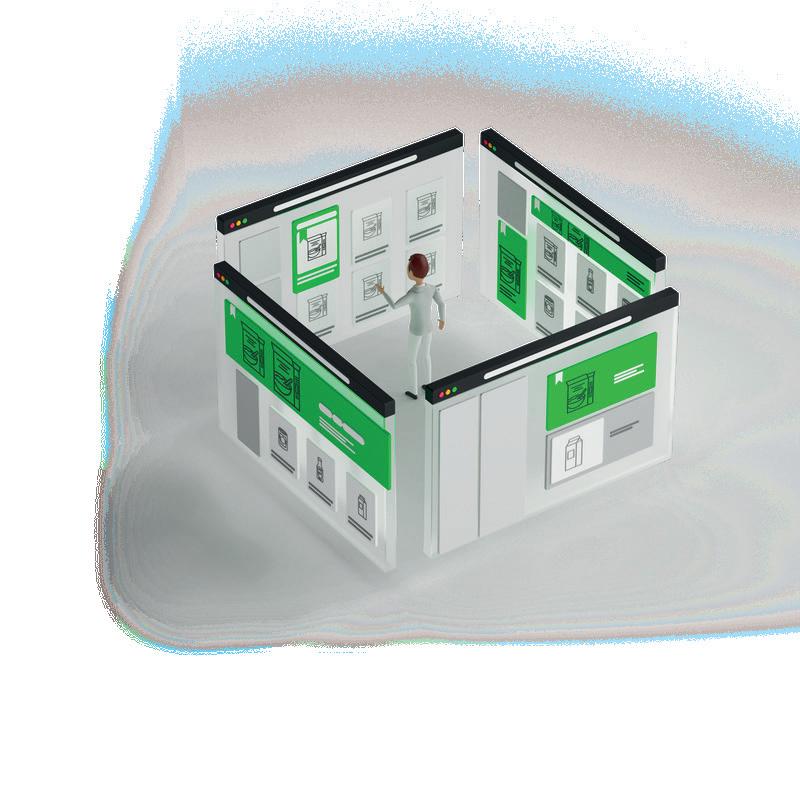
more choice than ever before, and their tastes have evolved to become more accurate and precise. This is reflected in data: almost seven out of ten shoppers now bypass search engines completely, and instead go directly to retailers in order to find the products they want. Those products might be tied to a certain type of content, such as videos, or news, or information about product quality, or health. This accuracy is what retail media sets out to provide, going deeper than ever before to build customer loyalty through

personalization. That, in turn, is finally allowing retailers to monetize their digital shelf space.”
In particular, Alban is a strong advocate of a unified approach to retail media, combining on-site, offsite, and in-store advertising. As he explains: “From a digital marketing perspective, it refers to what we call a ‘full-funnel’ approach, providing multiple ways for advertisers to be top-of-mind, and to raise their awareness around their brand. By adopting a unified approach, we can tie together all the first-party data at our disposal – for instance, taking contextual information, and connecting that with the browsing behavior that follows.” Where customers have provided consent, advertisers can then propose additional products depending on their interests. That in turn produces yet more data, which can be used to further refine the understanding of what the customer wants, helping to deliver even more relevant advertising in the future.
“This is easier said than done,” Alban notes. “To provide the data is one challenge, but it needs to be at a certain level of granularity to be easily understood by retailers or advertisers. It’s there that specialist retail media companies have a role to play – both providing the technology to identify digital shelf space in real time, and to propose products at a certain price, and being able to explain to an advertiser why their campaigns will be successful in that space, with the insights they need to determine whether it’s valuable or not.
“The ability of a retailer to develop a clearer understanding of what the user journey is, matters most of all,” he

emphasizes. “A unified approach can offer an effective way to look more closely into their data, and to help them really begin to define audiences and segments more efficiently.”
The adoption of retail media continues apace. The market is expected to grow at a 25 percent annual rate over the next five years, and it is on track to become a $100 billion industry by 2026. As the sector grows, so too will the opportunities for retailers. But there are also threats, as smaller companies find themselves in competition with a number of already well-established retail media networks, most notably Amazon.
“Especially within Europe and the Middle East, we’re seeing more and more retailers beginning to capitalize on the extra strategies that retail media provides,” Alban concludes. “In France alone, retail media spend has already grown by 42 percent between 2020 and 2021. Likewise, for customers grappling with a cost-ofliving increase, there’s an ever-greater incentive to take control of their purchases. It’s a global trend, and this is just the beginning.” ■
Alban Villani www.citrusad.com
Founded in 2017, CitrusAd created the first world-leading, self-serve retail media platform, enabling retailers to monetize their on-site and off-site digital assets. By partnering with leading retailers across 30 countries, CitrusAd enables brands to launch, measure, and and refine advertising campaigns across the full customer journey in one single platform.

 By Ira Dubinsky
By Ira Dubinsky
As a retailer, how many conversations do you have in a month about forecasts? Demand, supply side, SKU, region, category, fulfillment… The stark truth is that an ever-elusive, exceptionally accurate forecast isn’t going to happen.
So why do organizations still spend hundreds of thousands of hours tweaking, iterating and obsessing over their forecasts?
A forecast is only as good as the process it supports. If it’s part of an effective planning function that successfully optimizes inventory,
determines reorder points and reduces movements, then a forecast with 85 percent accuracy could deliver higher service levels than one with 90 percent accuracy.
In other words, even the most accurate forecast on its own is not enough – it’s what you do with it that counts.
If we take it right back to basics, demand fulfillment is about having the right stock in the right place at the right time. The temptation has always been to get a demand forecast as accurate as possible but, in today’s climate, maximizing
availability, margin and meeting On Time In Full (OTIF) targets is actually more about how well you can manage volatility across the entire supply chain. Squeezing an extra two percent accuracy out of a forecast doesn’t offer a meaningful competitive advantage.
If your end goal is to maximize on-shelf availability of stock (and keep costs down while doing so) then the focus should be on your end-to-end supply chain – the forecasting process is just one part of this.
Supply chains typically run on aggregated data, which gives a ‘big picture’ overview. By contrast, customer operations – where demand is generated – are more granular. The focus is on understanding the consumer through demographic and other types of segmentation and conducting category planning.
Consumer data and the intricacies of working with consumers aren’t often considered in the supply chain. But there is real power in using this data to drive supply chain operations and vice versa, using supply chain data to fuel customer operations.
Linking fulfillment and demand data represents a huge opportunity for demand planners. For example, location data can help to plan where to place inventory and optimize transportation and warehouse locations; fulfillment times and time horizon to restocking can be used to manage customer expectations and allocate orders; trends in customer behavior can help a consumer packaged goods business anticipate promotions, or disparities in final order quantities.
One would think an accurate forecast would ensure you have enough stock to keep service levels
high without holding too much. But, in reality, a broader overview of what is happening at every stage of supply, including demand generation, is needed to face today’s volatility. A broad range of data from both customer and supply operations can and should be used to optimize for volatility and determine inventory levels.
Leveraging data from the full breadth of the supply chain provides insight that is increasingly valuable, particularly in an environment of unpredictable demand, supply shortages and transportation challenges.
It’s not about how accurate your forecast is, it’s what you do with it that counts. If CPGs have an inventory problem, bringing together data from across the supply chain is how they solve it. ■

Ira Dubinsky www.peak.ai
Ira Dubinsky is the Go-to-Market Strategy Director at Peak, a Decision Intelligence platform on a mission to change the way the world works. Connecting data sets from across an organization to provide predictive insight, its platform includes a suite of features that enable customers to build and integrate AI-powered applications that optimize decision making across multiple business functions. It is used by leading brands including Nike, ASOS, PepsiCo, KFC and Sika.
It’s not about how accurate your forecast is, it’s what you do with it that counts
There are few in retail circles who would argue that the role of the store is the same as it was at the start of 2020, with the retail industry (like every other on the planet) undeniably changed as a result of the global pandemic.
Where once upon a time retail business models had the luxury of evolving over years and sometimes decades, retailers over the last two years have been forced to rapidly pivot their operations, change business models and switch (in many cases) to unfamiliar, new ways of working.
These changes have included the diversification of the physical store to support the increase in ecommerce; delivering entirely new
offerings such as curbside pickup; and the realignment of workflows and processes to support profitability across an entire network, not just one location.
While it’s almost inevitable that ecommerce growth will outpace growth through physical stores at some point in the future, it would be a huge mistake to lose sight of the critical role stores have to play beyond purely profitability, but also in terms of softer measures of brand health, not least loyalty and the overall customer experience journey.
The key to this lies in not being distracted by the minutiae of how an order is necessarily placed, but rather, concentrating on where it ultimately gets fulfilled.
For example, Target recently reported that as much as 75 percent of its online orders involved their stores in some capacity: be that buy online, pickup in store (BOPIS), curbside pickup, ship from store, local home delivery from store stock, or even buy online, return in store (BORIS).
As a result of (rather than in spite of), the rapid growth of digital channels in 2020 and 2021, 21st century retailers need to understand that the store will remain a significant channel for generating revenue, customer engagement and fulfilment opportunities.

This rapid evolution has led to an increased awareness and reliance on dynamic and resilient in-store systems, critical to modern retail
ecosystems – systems like modern Point Of Sale (POS).
POS has certainly come a long way since the rather perfunctory function of previous generations: no longer is POS simply a tool to complete a transaction (sales or returns) and the associated reporting; modern POS today represents the key to unified commerce, enabling activities such as endless aisle, click and collect, store fulfilment of online orders, clienteling and loyalty.
“ “
“ “
...modern POS today represents the key to unified commerce

While the store may no longer be the sun around which all retail offerings orbit, a compelling bricks and mortar presence that works in harmony with a unified, smarter digital offering, could well be the answer to the question on the lips of so many retail leaders right now: ‘how do we create a compelling competitive advantage against such a significantly changed industry landscape?’
The role of the store has changed and so too has the instore technology that supports it. This however, should not come as a great surprise as the history of the retail industry has always been one of change, evolution and progress –today’s environment, accelerated by the pandemic, is no different.
With greater emphasis on the need to fulfil, execute and optimize against ecommerce and e-fulfilment, it’s clear that the physical store, supported by modern POS systems still has a significant (if not changed), role to play when it comes to being able to commerce confidently.
While the store of yesteryear is well and truly dead, the store of today is undergoing somewhat of a renaissance. The challenge now falls to retailers to realize the true potential of their marquis bricks and mortar assets by pairing them with the right futureready, in-store systems like modern Point Of Sale. ■
For a list of the sources used in this article, please contact the editor.
Manhattan Associates www.manh.com
Alex MacPherson is Director of Solution Consulting and Account Management, at Manhattan Associates, a technology leader in supply chain and omnichannel commerce. It unites information across the enterprise, converging front-end sales with back-end supply chain execution. Its software, platform technology and unmatched experience help drive both top-line growth and bottom-line profitability for customers.
Manhattan Associates designs, builds and delivers leading-edge cloud solutions so that across the store, through your network or from your fulfillment center, you are ready to reap the rewards of the omnichannel marketplace.

The key to this lies in not being distracted by the minutiae of how an order is necessarily placed, but rather, concentrating on where it ultimately gets fulfilled


Exhibitors and attendees to gather in Las Vegas for the Sports Licensing and Tailgate Show. The only event of its kind, the show targets the sports merchandise market
Registration is now open for the next in-person Sports Licensing and Tailgate Show (SLTS). The event will take place from Wednesday, January 18th to Friday, January 20th 2023 at the Las Vegas Convention Center. Located in the South Hall, upper level, at 3150 Paradise Road, Las Vegas, Nevada, the Convention Center is one of the busiest facilities in the world.

A 4.6 million-square-foot facility, the center is operated by the Las Vegas Convention and Visitors Authority (LVCVA), and is well known among industry professionals for its versatility and capacity to host some of the largest conventions and trade shows each
year. Boasting 320 days of sunshine, state-ofthe-art facilities, and world-class dining and accommodation, it’s easy to see why Las Vegas has been the world’s number one trade show destination for the last 26 years.
The SLTS is produced by Emerald. Formerly Nielsen Expositions, Emerald is a leading operator of business-to-business trade shows in the United States, producing over 85 show and conference events per year. It connects buyers and sellers across nine diversified markets, including general merchandise, sports, hospitality and retail design, jewelry, photography, decorated apparel, building, healthcare and military.

SLTS is the only event of its kind to target the sports merchandise market and offers access to thousands of retailers and universities. Exhibiting companies hold the licenses for professional, collegiate and all other sports teams. It is the premier event for licensors, licensees, retailers and colleges interested in licensed products.
Sports licensing is a term that applies to the agreements between teams and individual athletes and the producers of merchandise and other products. Every team in the world uses partnerships and agreements to get new uniforms with players and to create new clothing and merchandise for fans. The show is not open to the public, and as a trade only event, only qualified buyers and industry professionals may attend.
Attendees will have the chance to see more than 300 exhibiting companies, representing every possible product category. All of the professional leagues and collegiate teams will be represented. Licensors participating will include CLC, NASCAR, National Hockey League, NBA Properties Inc. and NFL. For stores selling sports-related licensed products or tailgating supplies, the SLTS offers the perfect place to shop exhibits, with products licensed by over two dozen sports leagues and licensors. From apparel and accessories to toys and souvenirs, countless items are available across all categories.
All of the major leagues and collegiate teams are represented here, showcasing the next season products coveted by

customers countrywide. Networking events and educational sessions allow potential purchasers to see what their peers are up to, and to gain ideas to take away and implement in their own stores.
Additionally, the License to Buy discount program provides incentives for buyers to place orders right on the show floor, offering a unique, on-the-day deal. At the 2022 show, over 200 buyers placed more than $18 million in orders with the 113 participating License to Buy exhibitors. Furthermore, buyers can take advantage of discounts and special offers from participating exhibitors using the License to Buy coupons found in the Show Directory. When making cumulative purchases of $500 or more, the SLTS will reward with money back. When a buyer places orders with
more than four participating License to Buy companies, they earn an additional bonus of $40 per company.
The show attracts buyers from all types of retailers: specialty shops, fan shops, department stores, sporting goods stores, online retailers, collectibles and gift stores. Retailers that attended in 2020 include: Academy Sports & Outdoors, Amazon.com, Belk Inc., Dick’s Sporting Goods, Dunham’s Sports, Fanatics, Hibbett Sports, JC Penney, Kohl’s, Lids, Rally House, WalMart and many more.
The show also continues to grow in the collegiate licensing segment. In addition to hundreds of college bookstore buyers, including Follett and Barnes & Noble College Booksellers, there will be more than 200 college licensing departments in attendance.
Exhibitors can offer their products to more than 5000 attendees from across the country and beyond. More than 2000 buyers from independent and chain sporting goods stores, suppliers, mass market retailers, general merchandise and specialty stores and fan shops will be in attendance. In addition, representatives from many different colleges and universities come to the show, including licensing departments, book store buyers, alumni associations and more.
From sponsorship opportunities to brand and custom promotional assets, SLTS can help exhibitors to maximize their return on investment and drive more traffic to their booths by offering a wide selection of promotional tools. 2023 is set to be a dealmaking show. ■

Dates: 18th to 20th January 2023
Location: Las Vegas Convention Center, South Hall, 3150 Paradise Road, Las Vegas, Nevada Website: www.sportstailgateshow.com


When we spoke with Rovio Entertainment Corporation (Rovio) earlier this year, the Finnish developer, which is best known for creating the Angry Birds franchise, told Retail Merchandiser that it had a busy few months ahead. With over five billion downloads of its hit mobile games, plus two feature films and multiple television and web shows, Rovio is in an ideal situation.


The latest retail and merchandising marvels from Rovio, the developer of one of the world’s most successful games
“Since our last feature, the wheels have certainly been in motion,” begins Katri Chacona, Director of Brand Licensing at Rovio. “This year has been a huge one for the Angry Birds brand, with various new game launches, partnerships, and our first long-format animated series.”
In the last six months, Rovio has also increased its integration with sports brands that reflect positive values of staying active and healthy. Having just partnered with Rovio, Yunes Ben, Head of Marketing & Communication at Venum, the world’s leading manufacturer of combat sports equipment and apparel, said: “This collaboration is designed to combine utility with pleasure by

“ “
“ “
enabling children to have fun while developing their cognitive abilities.”
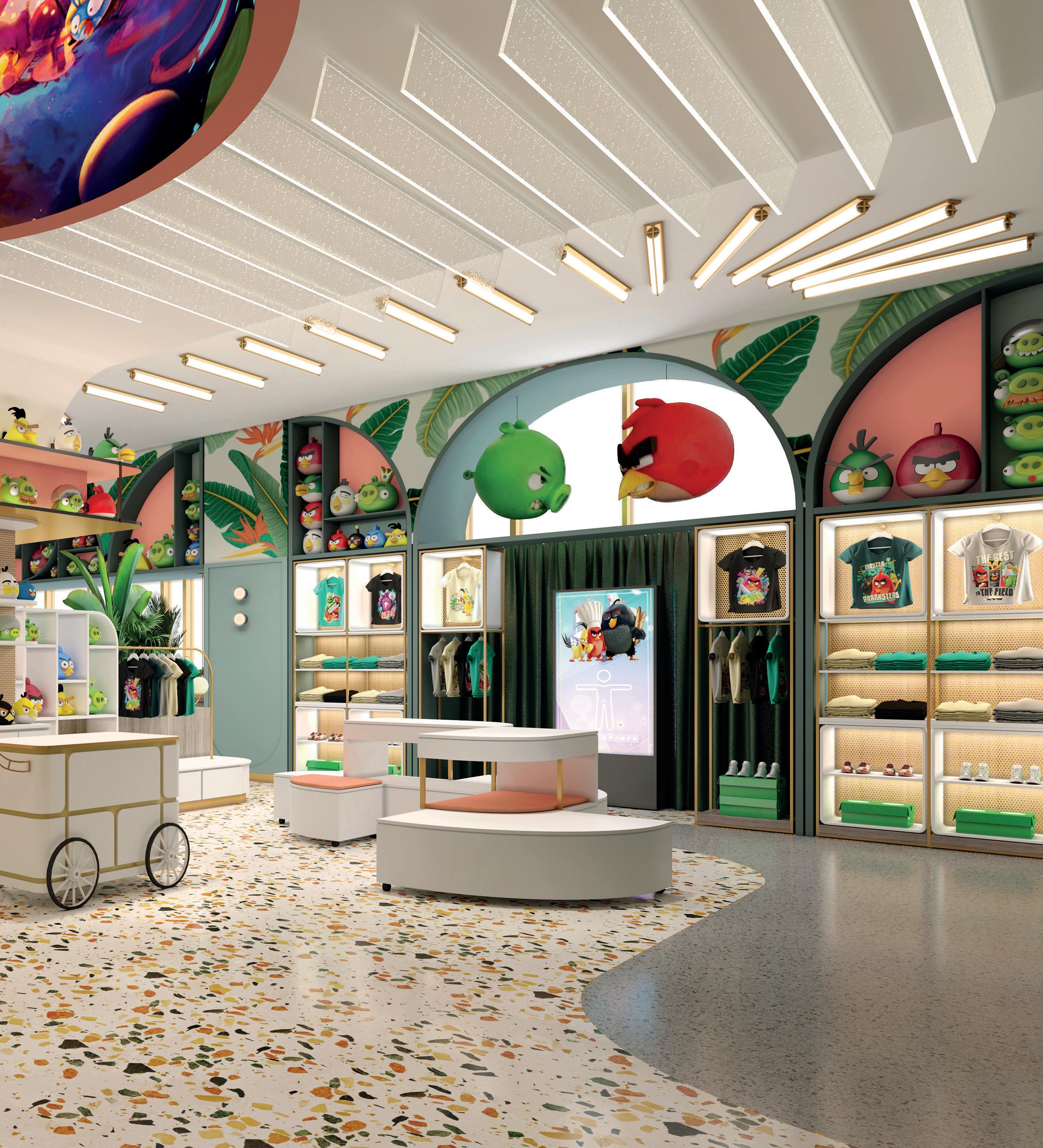
The deal will see an exclusive line of combat sports and lifestyle products – boxing gloves, bear paws, reflex bags – all based upon the Angry Birds universe and its characters: Red, Chuck, Bomb, the Green Pigs, and so on. By partnering with Venum, Rovio intends to get more children active in a fun and safe way. In addition to the physical products, an exclusive augmented reality experience will be accessible to buyers – all they need to do is scan the special QR code on the packaging!
Another example is Rovio’s partnership with Capsule Skateboards (Capsule), a Cyprus-based company that takes
an alternative approach to skateboard manufacturing. “Instead of using trees to build the decks, Capsule has invented a new, more sustainable skateboard made of a special high-quality polymer compound resulting from meticulous research and development from their team of skaters and engineers,” explains Katri. “The decks are waterproof, impact-absorbing, and longer lasting than traditional boards. Capsule decks are also 100 percent recyclable, free from toxic glues and resins, and proprietary construction technology provides a more durable and eco-friendly board that is lightweight. In short, it provides a whole new skating experience for the end user.”



“ “
“ “
Regarding the company’s games, Rovio is a business that listens to its fans. This has led to the return of the original, premium Angry Birds game, which has been requested for years. Another development that quickly followed suit was a collaboration with Mighty Mojo Toys. “We wowed people by bringing back the original Mighty Mojo plush toy, a classic and firm favorite among Angry Birds aficionados,” says Katri. “By turning casual players and viewers into passionate fans, we are purposefully building a more robust fan base, leading to better brand engagement and equity for decades to come.”

An additional pair of Rovio’s new merchandising partners are Ion8, which is based in the UK and creates leakproof hydration water bottles, and Four Seasons Design, a seasoned manufacturer of apparel. “Bright colors, durable powder paints, and 3D tactile prints bring Angry Birds to life with Ion8’s legendary OneTouch water bottles,” comments the former. Four Seasons Design is similarly proud of its association with the Finnish game developer: “We are excited to announce a new relationship with Rovio. As a registered licensee, Four Seasons Design will put to work its 22 years of apparel and accessories manufacturing experience to create innovative new products for all Angry Birds fans.”
Leading the development of these ventures is IMG, the licensing agency that facilitates an ever-expanding range of Angry Birds merchandise and commercial partnerships. “IMG is our global exclusive licensing agency and, in 2020, we built a new licensing strategy, which is now starting to come to fruition with regards to new partnerships,” details Katri. “IMG is the biggest licensing agency of its kind. With personnel all around the globe, it allows us to build on the program exponentially. Our strong relationship with them, as well as our common goals, means we are able to grow the business successfully and in the right direction.”

On its fruitful, ongoing collaboration with Rovio, Bruno Maglione, President of Licensing at IMG, comments: “Angry Birds is one of the most recognizable brands in the world and is loved by people across generations and territories. We have worked to identify the right opportunities for the brand so that we can deliver authentic collaborations that capture the values and energy of Angry Birds and appeal to loyal fans and partners alike – whether that is performance-based lifestyle products, eyepopping sporting equipment and collectibles, or memorable physical experiences.”
It is clear that Rovio is bridging the gap between mobile video games and, well, the rest of the retail merchandising sector. Partners like Somerbond and PowerLocus attest to the success and commercial fortitude of the Finnish developer. “As an awardwinning licensee of apparel, we are excited
to announce our renewed partnership with Rovio, bringing to market innovation and creativity – not to mention 35 years of experience,” says the former.
“Our first range of Angry Birds merchandise will hit the Angry Birds World Theme Park stores in Qatar this November.”

Similarly, PowerLocus is keen to express excitement for the company’s burgeoning partnership with Rovio: “We are happy to announce the start of our new cooperation with one of the most successful game developers in the world. We specialize in the development of audio and consumer electronics, and as such we are eager to put all our expertise and creativity into the task of designing sleek headphones for all Angry Birds fans.”
On top of these partnerships, the company released multiple announcements for exciting Location-Based Entertainment (LBE). “This has been a really important development and growth area for the brand. We have several launches planned this year, and even more in 2023, including the first Angry Birds café, where fans will be able to step into the world of Angry Birds every time they enter,” says Katri.
The café will double up as a retail store and will be located inside a mega-development in Flushing, NY, acting as a central hub for the global phenomenon. Fans of Angry Birds will be treated to the nation’s largest collection of merchandise, and the bakery will be fully
stocked with sweet treats, such as cake pops, macarons, and bubble tea.
“Scheduled to open later in 2022, the café will feature many unique photo opportunities and a specialty menu,” reveals Katri. “The location uniquely combines the Angry Birds game and movie character aesthetic with a newer, smooth combination, allowing fans to enjoy all versions of the characters they know and love.”
But there is more! Across 12 UK and US locations, Immersive Gamebox will host an interactive Angry Birds gaming experience like no other, allowing fans of the franchise to engage themselves in a life-sized version of a slingshot adventure game. Launched in June, fans have been eagerly trying the one-of-a-kind, hyper-immersive gameplay, running through various levels where different teams must compete to destroy digital adversaries with two slingshots. Utilizing the latest technology, such as projection mapping, motion tracking sensors, and touch screens, players must collaborate and work together if they want to win.
Alongside that, the global pop culture phenomenon has been turned into a theatrical performance: Angry Birds Live: The Slingshot Adventure! The stage show will feature some of the franchise’s most beloved characters, including Red, Silver, and Leonard, as they comically progress in an entertaining (mis) adventure that incorporates iconic gameplay elements in its presentation. Spearheaded by Kilburn Live, a global market leader in branded live family entertainment, this is just one example of how Rovio is using its wellestablished brand to break down boundaries and show the world the vast commercial and entertainment applications that a mobile game can have.
“All of these projects expand the brand to new audiences in innovative and exciting ways,” explains Katri. “These experiences take Angry Birds outside of the digital world and allow fans
to be part of a bigger story – one told with real life experiences.
“Angry Birds is over ten years old and it is growing into an evergreen brand with multiple touch points,” she reflects. “The multigenerational product continues to expand into new marketplaces and media, with different experiences targeting different demographics, such as games for older audiences, movies and television series for families and children, and LBE for all. By building the brand in these different areas, we are able to collectively elevate it.”
Like any good magician, Rovio always has






Four Seasons Design, Inc.
Crashing Legend Tee

The birds are back with new retro designs, coming out next month!
www.amazon.com
Kids collection of high quality headphones launching at the end of 2022 https://tinyurl.com/2j8uhsyw


Classic Angry Birds Plush
Collect all fan favorite characters - coming this winter! www.mightymojotoys.com

People will spend at least one-third of their lives sleeping, so it pays to make sure that mattresses are comfortable and aid restful slumber. That is the thinking behind the strategy of Kingsdown, which specializes in the design and manufacture of a range of luxury mattresses.
Headquartered in Mebane, North Carolina, and now 118 years in business, Kingsdown has ten manufacturing facilities across the USA, employs over 500 associates and sells in more than 20 countries across the world. The business boasts manufacturing sites in Canada (which hosts R&D, manufacturing and production from Ontario Province),

Kingsdown applies scientific principles and technologies to the design and manufacture of its world-leading mattresses
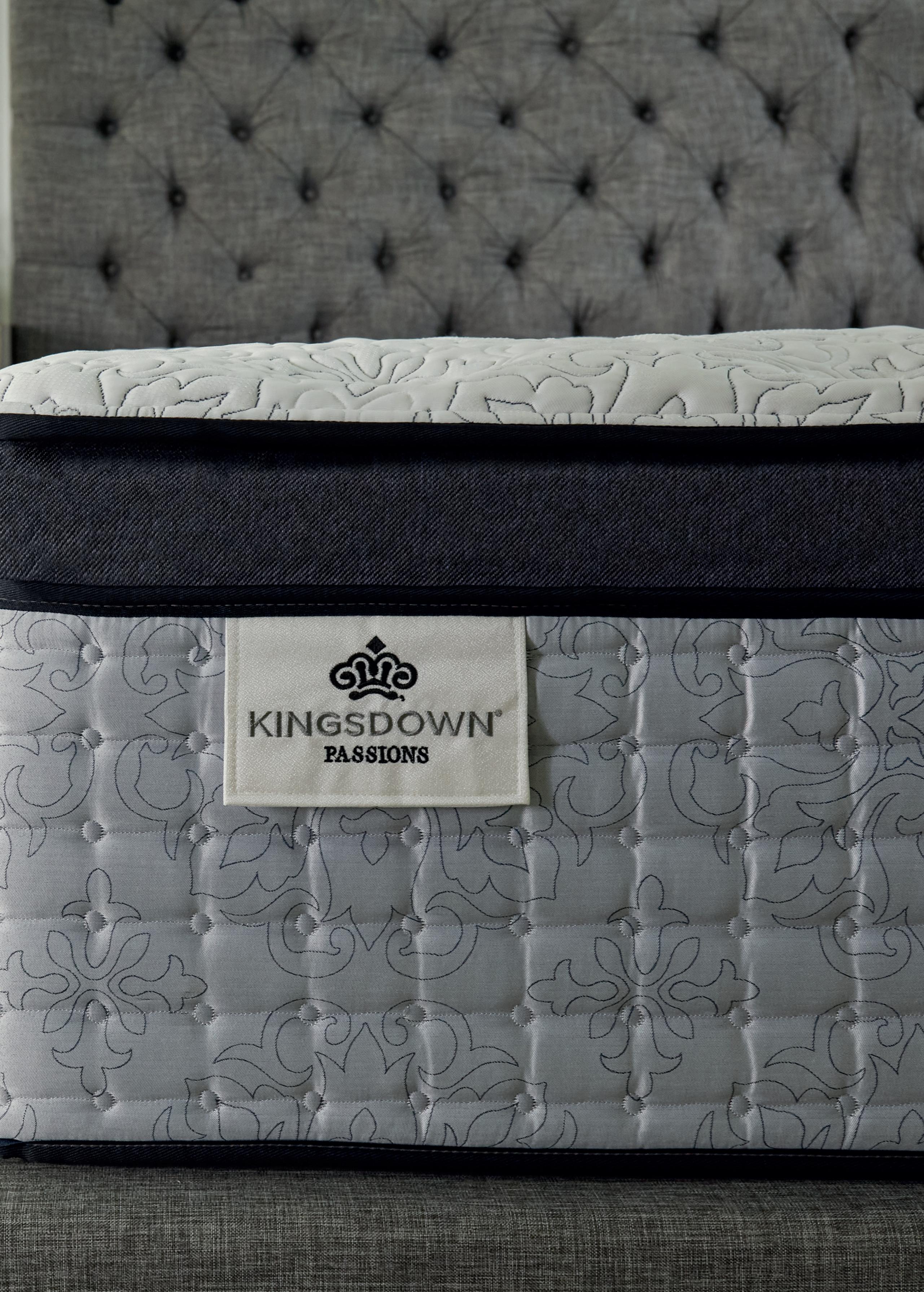
Australia, Brazil, China, Malaysia, Mexico, Taiwan and Vietnam. It has representative offices in the UK, Hong Kong and Japan, and revenues are in excess of $100 million a year.
Sleep is big business. Mattresses do more than provide just a cushion between the sleeper and the floor. A good mattress will aid restful sleep and last for years; a bad one will lead to aches and pains and just one night can be too much.
Kingsdown’s comfortable product range extends from its ‘affordable luxury’ $699 Prime Collection up to $8000 Vintage Collection creations. Its markets include individuals purchasing for the home, boutique hospitality contracts and the interior design community.
“Product designs cover the whole gamut, from inner springs to hybrid, artisan foam, premium latex, superior air systems and even boxed bed solutions,” says Frank Hood, President and CEO of Kingsdown.

Industries PF
Industries PF manufactures high-quality sprucepine-fir (SPF) wood cut-to-size components, and assembled solutions for the mattress, appliance, automotive, shipping and fence industries.
To offer the most cost-effective solution, our components are offered in a wide variety of grades, dimensions, and treatment options. Using our own facility, we offer ISPM-15 certified products, which can also be stamped or provided with an HT certificate to facilitate shipping around the world.
We also offer cost-effective assembled solutions, thanks to our highly mechanized nailing production process, and our skillful and experienced team.
The lumber we process is also sourced exclusively from the sustainably managed forests of the northeastern US and Canada, and we are a zero-waste company. All the raw materials we use is either processed, reused, repurposed or recycled.
Reach out to our sales team to find out how we can help you save.
Finished mattresses are bulky and have to be shipped by surface transportation. Multiple facilities across North America mean that the business can service its customers efficiently, quickly and with the lowest possible carbon footprint. While not the biggest mattress manufacturer on the planet, Hood sees that as a distinct advantage. “Our smaller size, combined with our large-scale capabilities, makes us a nimble, flexible partner, and our speed to market means that we can meet the most ambitious challenges.”


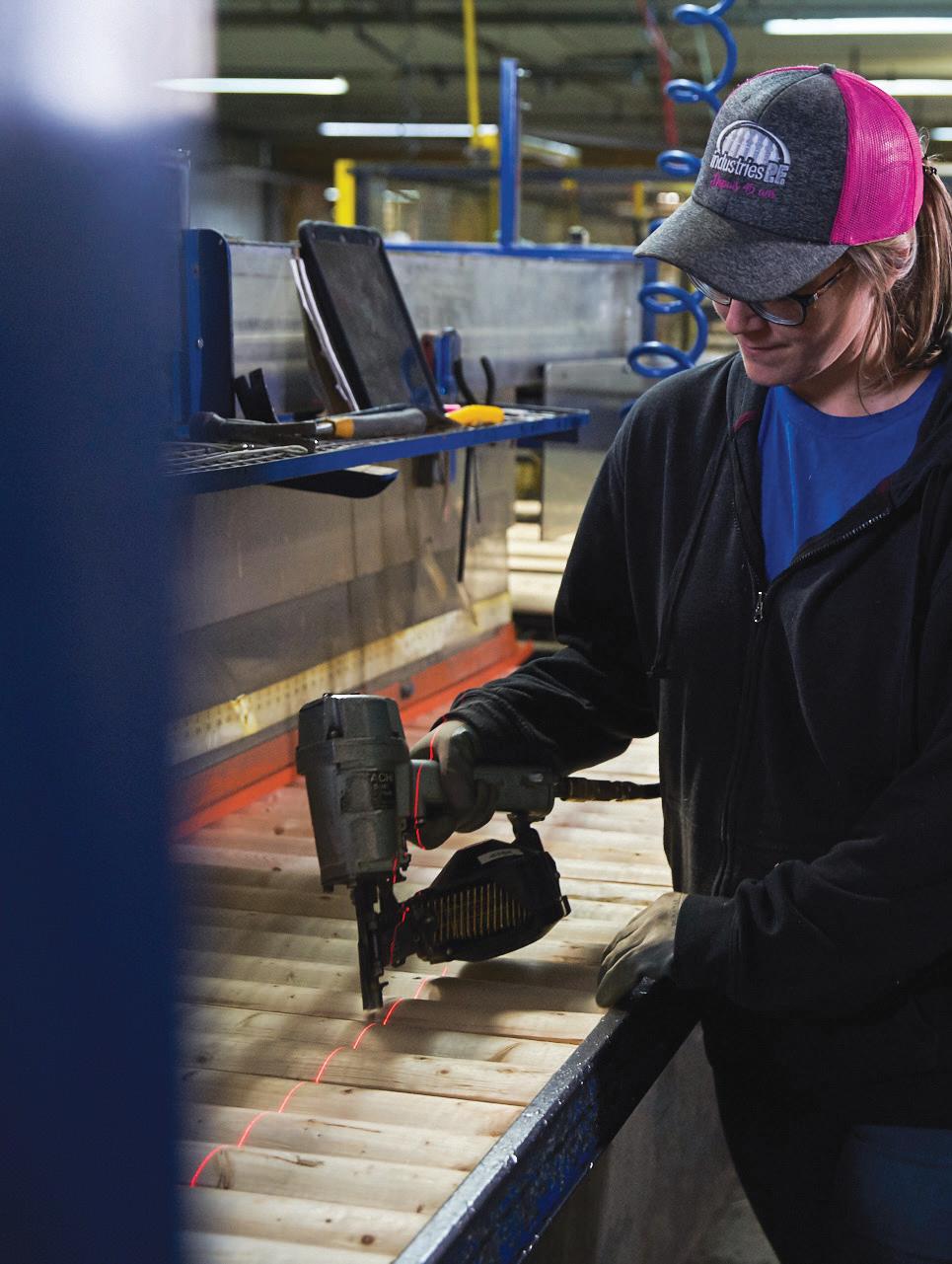
Kingsdown is a forward-thinking company. Regardless of price point, strategic analysis is the basis of every product’s design and







development. Since it was founded, the company has invested in technology to make its products better, more competitive and more attractive to purchasers. Customer-centric product design is a collaborative process. Hood acknowledges that this means it can take longer and create SKU complexity but maintains that its personalized approach is worth the effort.
“While much of the industry is moving towards centralization, automation and standardization, we still value hands-on attention carried out by highly engaged, skilled associates,” he says. “We will do things on a personal level that the largest brands simply won’t take the time and trouble to do.”











“ “
Our smaller size, combined with our large-scale capabilities, makes us a nimble, flexible partner
“ “
Kingsdown is proud of its tradition of hand-crafting but technology is integral. It sees distinct competitive advantages in its styling and the quality of its materials and manufacturing techniques, which are very much driven by sleep science and testing.

“While we integrate innovations in materials, construction and assembly techniques, we do so without sacrifice to long-term performance and lasting comfort,” Hood explains. Product design is a customer-focused, collaborative process. Kingsdown maintains that close business relationships and collaboration with commercial partners may be complex but they allow retail customers to help ensure that products address specific needs on their showroom floor. The company constantly monitors the bedding marketplace to spot emerging trends and to identify new markets and opportunities.
Its advanced solutions are scalable across large retail networks but can also be bespoke to individual customers. The company maintains that its bedMATCH® application is the leader in consumer diagnostics. It uses 18 statistical measurements and over 10,000 scientific calculations combined with sleep preference details to provide personalized recommendations for products on the retail floor that will offer optimal postural support.
“Our product development process begins with X-Factor testing. Fourteen differently-shaped platens work together to simulate body shape and mass, from the smallest person to the largest. The mattress’ support characteristics are then measured and performance curve data are entered into our database,” Hood explains. All Kingsdown mattresses are tested to ensure they meet proper support standards. “Our patented Inline Comfort and Support Analysis (ICSA) system is the first in the world that measures every
mattress to ensure the intended support level is delivered, every time.” No Kingsdown mattress is delivered to a consumer’s home or a retailer’s showroom unless it passes ICSA standards. All test results for each product are recorded and held in the system and each individual item made is tracked.
“These processes are unheard of in our industry but Kingsdown is dedicated to exceeding industry standards, so our manufacturing integrity is of the utmost importance,” he says. “Kingsdown has been a ‘smart company’ for over 20 years, developing smart mattresses, the rigorously scientific bedMATCH® process, and our patented ICSA system. Lately, we have gone further into generating and utilizing data insights through every


aspect of our organization, from market strategy to specific customer insights.”
This has enabled the company to respond with agility to the challenging market conditions of the past few years – and it hasn’t stopped thinking about development and innovation. Growth is an ongoing objective, both organic and by acquisition; Kingsdown is constantly on the lookout for other businesses that will complement its existing capabilities, help it enter new markets or enable it to gain a competitive advantage. Licensing to manufacturers in Europe and Asia is another development route. In addition to commercial sustainability, environmental responsibility is also high up the agenda.
“We take pride in sustainable sourcing of natural materials, such as organic cotton, Joma wool, Canadian lumber and coil systems made from recycled steel. Zedbed, our artisan foam bed partner, sources natural, sustainable latex and practices low-emission processes. We have comprehensive recycling programs in all our facilities and the Kingsdown Group operates in accordance with Mattress Recycling Council and Forest Stewardship Council standards,” Hood says, adding in conclusion: “As consumers continue to evolve their shopping preferences, Kingsdown has many exciting developments on the horizon, and technologies like bedMATCH® are positioned to exceed their expectations.” ■ www.kingsdown.com

Home to a number of iconic brands, fashion retailer Abercrombie & Fitch Co. is optimizing its supply chain operations in order to deliver a future-fit shopping experience
Abercrombie & Fitch Co. (Abercrombie) has gone through many chapters during its 130-year history. The iconic high-street fashion retailer was founded in 1892 as an outdoor specialty retailer, carrying high-quality camping, fishing, and hunting gear, and is proud to have outfitted famous names, including Theodore Roosevelt, John F. Kennedy, and Amelia Earhart. Fastforward to the present day, and it’s evolved into a global omnichannel retailer, operating a total of five brands: its namesake Abercrombie & Fitch, along with Hollister, Gilly Hicks, Social Tourist, and abercrombie kids. But not everything changes. Then, as now, Abercrombie prides itself on two commitments: to quality, and to its customers. “We honor our lineage,” says Larry Grischow,
Executive Vice President of Supply Chain at Abercrombie. “One of the things that sets our family of brands apart is that we’re rooted in purpose. We’re there for our customers, on their journeys to being and becoming who they are throughout their various life stages.”
It’s a mindset that will ring true for those familiar with Abercrombie’s brands. Hollister, for instance, targeted towards teenagers across the globe, promotes the concept of an ‘endless summer’.
“Another key is that we know our customers, and know them deeply,” Larry adds. “At every touchpoint throughout their shopping journey, we make it about them. We meet them where they are, know how they want to shop, how they want their products delivered, returned, and more.”
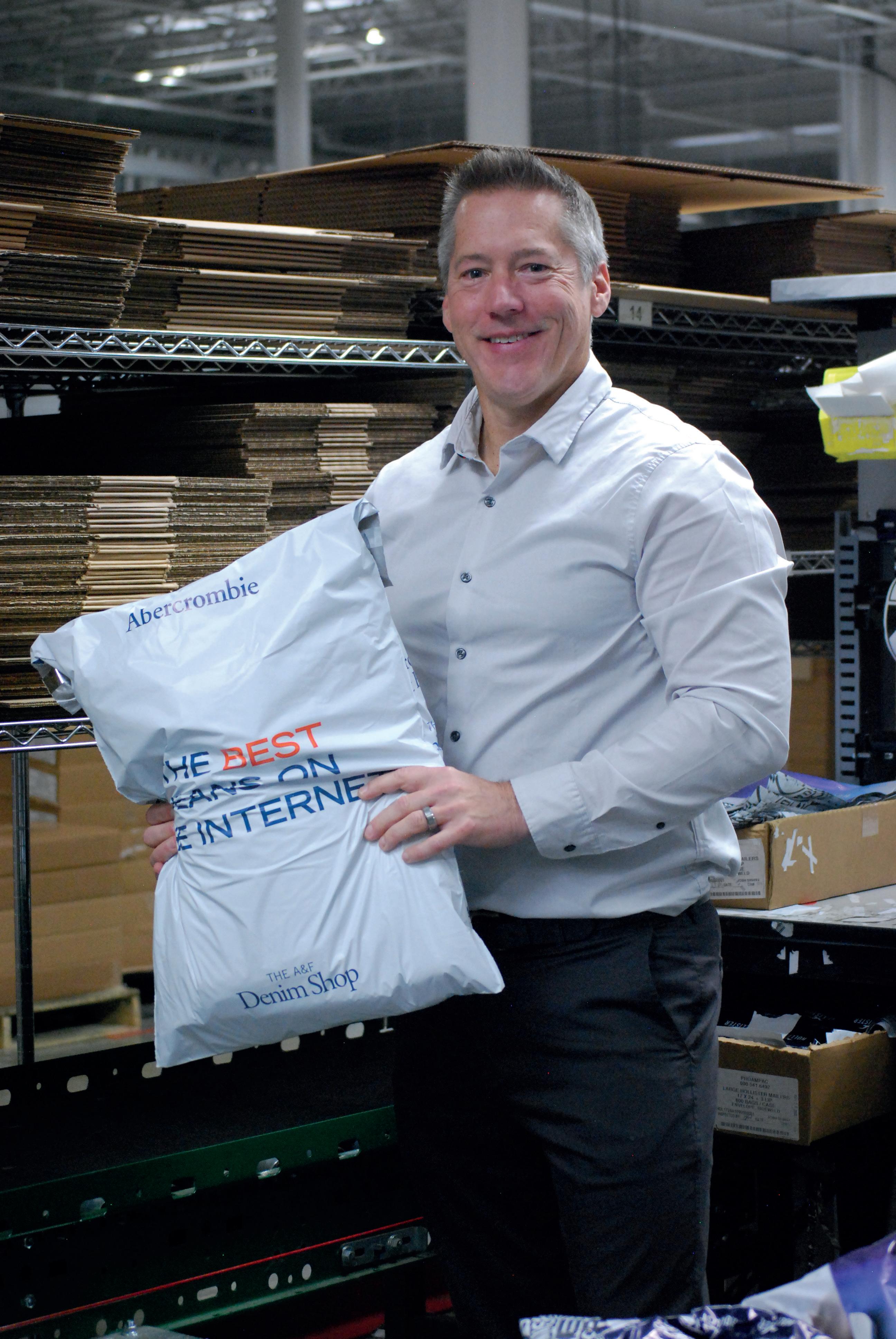
One of the things that sets our family of brands apart is that we’re rooted in purpose.
“ “

This insight is key, at a time when there are more question marks around supply chains than ever before. “With Covid-19, we’ve certainly had our share of challenges,” Larry admits. “To navigate those, it requires a robust network of partners, through which we can leverage our complementary strengths to ultimately deliver to our
customers. For instance, we worked with the supply chain experts from North Highland to help us reimagine our distribution network, with the aim of positioning inventory closer to customers and to meet their needs, accounting for the massive e-commerce acceleration since the pandemic began.”

For Abercrombie and its family of brands, the aim is to provide customers with a future-fit supply chain – as Larry puts it, one that is “digitally enabled, automated, and self-healing.” He continues: “We’re always focused on driving efficiency and reducing cycle times. Over this past year, we’ve implemented a

highly automated fulfilment center in Phoenix, Arizona, designed to increase e-commerce capacity in a way that places less dependency on labor, something that has become a significant challenge throughout the pandemic.”
The company is also investing across its other facilities, installing the latest material handling equipment within the largest of its e-commerce fulfilment centers, to drive efficiency throughout the packing process. “Automation doesn’t stop with the physical facilities, either,” Larry points out. “One initiative we’re really excited about, and one that we’ve seen good traction around, is robotic process automation. We’re leveraging that technology, taking some of the necessary but repetitive and

mundane tasks, and creating robots to complete them. That in turn frees up our workforce, who can focus solely on delivering for our customers.”

At the moment, one of the biggest areas of exploration for Abercrombie is digitization. “We live in a digital world, and our target customers have grown up in that world,” Larry reflects. “So, we need to lean into that. From a supply chain perspective, we’re always trying to improve visibility, upstream and downstream, using that information to make faster, better decisions. That means trying to create a digital twin for every physical movement in the supply chain and capturing external signals – such as public health data –
that can shape our decision-making.
“Likewise, we need to consider how to utilize data in a more meaningful way to improve the customer experience and drive efficiency,” Larry explains. “Again, that’s about leveraging our partnerships with those who are great at what they do. In this instance, we partnered with Green Mountain Technology (GMT) to craft our final mile delivery strategy, and then optimize it from a service and cost standpoint.
“To apply that to our current climate, we saw during the pandemic how everybody shifted from bricks to clicks, which then placed extreme pressure on final-mile capacity,” Larry
goes on. “Parcel carriers were capping volume, while there were also pockets of capacity that we could go after. GMT helped us optimize our carrier allocations in order to hit our delivery objectives. Consequently, we were able to pivot to regional carriers earlier than many other retailers, and secure capacity ahead of time. That allowed us to diversify at a greater pace than the rest of the market.”
With the closure of physical stores for a period of time in early 2020, the shift of consumers spending online is an industrywide phenomenon. As Larry notes, e-commerce sat at approximately a third of Abercrombie’s revenue pre-pandemic. Now, it accounts for around half – with the potential to rise yet further.
“I don’t think anybody really knows how e-commerce penetration will change over
North Highland Management Consulting (North Highland) makes change happen, helping global retailers transform by placing people at the heart of every decision. With our blend of workforce, customer, and operational expertise, we’re the world’s leading transformation consultancy. We have more than 3,000 consultants worldwide in 65-plus offices around the globe. With our deep knowledge of supply chain engineering, facility design, and labor management, we offer holistic, end-to-end distribution performance improvement solutions to increase the efficiency and effectiveness of distribution networks. We specialize in boosting performance and driving efficiency through people and talent management, functional and operational excellence, and workforce planning programs.
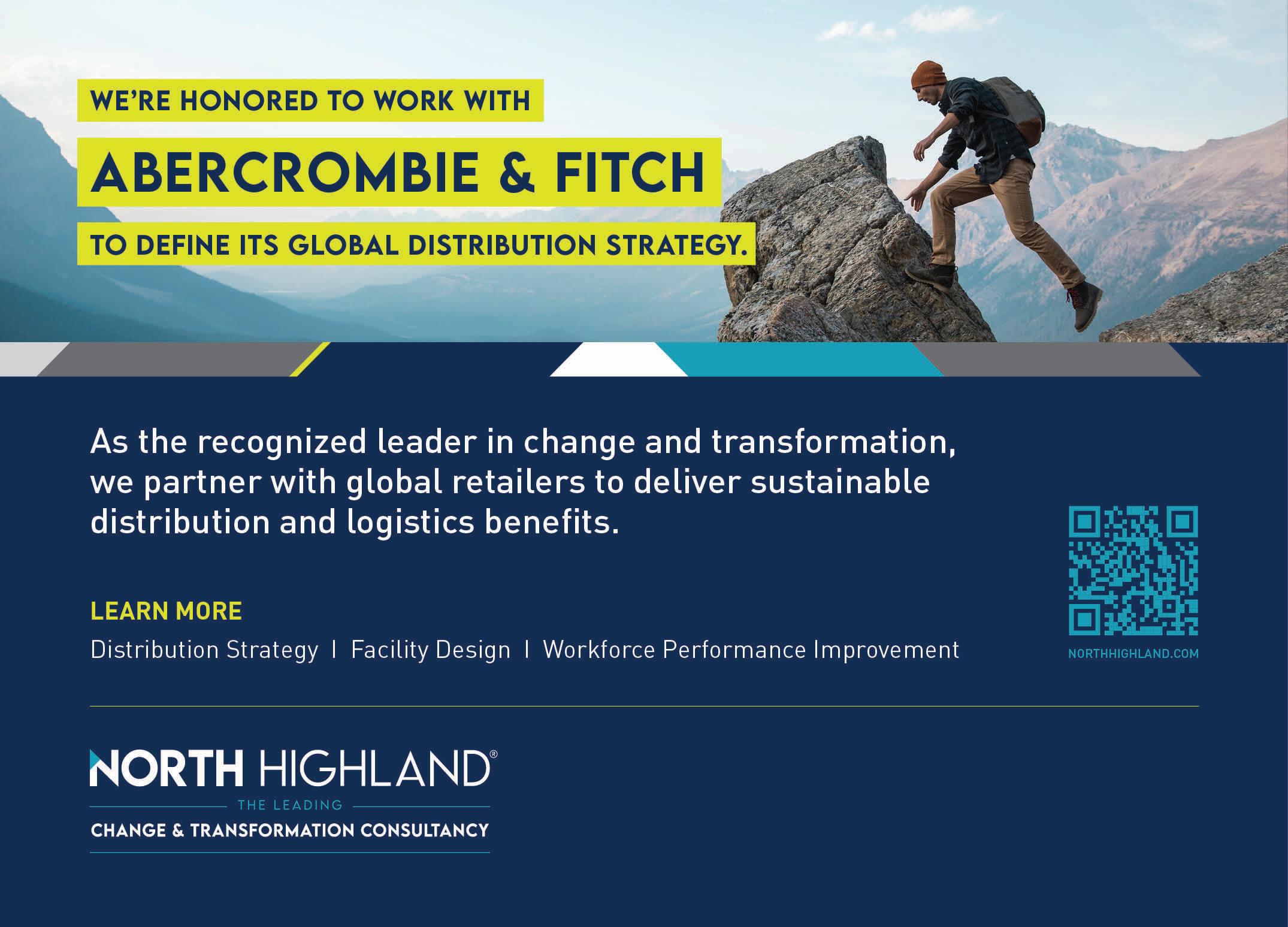
At Landmark Global, we’ve been busy pioneering modern trade solutions, enabling thousands of iconic brands, like Abercrombie & Fitch, to expand seamlessly into new territories and reach new customers.
By connecting with our custombuilt technology, our expansive worldwide network and our team of dedicated customs experts, we offer a seamless e-commerce delivery experience for you and your customers.
E-commerce Specialists Market Leader into Canada

Duty & Tax Estimation
Simple Integration Worldwide Fulfillment
the next few years,” Larry states. “Currently, we’re seeing a significant shift back to stores, with the balance between in-store and online beginning to stabilize. However, those figures are different by brand: e-commerce penetration is higher in our adult brands than it is in Hollister, which reflects how those target customers shop.
“Depending on how the next generation of teenagers shop, we need to be prepared to flex,” he insists. “As a team, we’ve completely changed our people, processes and tools across the organization to lean into this, organizing ourselves in an agile fashion around the customer journey. For instance, we have a team that’s solely focused on the checkout experience, whether you’re in stores or online, and how we optimize that experience. Our supply chain team then works with our agile squads to make sure we’re delivering fulfillment capabilities that ‘wow’ our customers.”
This dialogue between customer experience and fulfillment has been essential in the rollout of Abercrombie’s latest offering: same-day shipping from stores. “We have a test and learn methodology, and it’s an initiative that
Do you have the right carrier RFP partner for your business? You should, there’s a lot at stake. Devising a clear, efficient, and less-costly path forward for your network is an enormous task. For nearly 25 years, we’ve leveraged relevant, unbiased market intelligence and a proven process for helping shippers like you navigate RFP events with unmatched confidence and success. How?

First, guide your RFP strategy, and set clear expectations with our unique market intelligence. Founded on decades of partnering with the world’s largest and most complex brands, our market view is second to
performed really well with our test markets,” Larry says. “Clearly, we have a subset of customers who have a need for this service, and now it’s available from virtually all our stores in North America, as well as stores in the UK.”
none. Second, we help you identify the most impactful contract opportunities based on your business and network strategies. Third, have confidence like never before and gain leadership buy-in with our down-to-the-penny contract modelling, so you’re not relying on assumptions.
Lastly, we partner with you as an extension of your team, working alongside you to ensure your carrier contracts and network are in sync, and helping you to identify and drive meaningful strategic objectives. Do you feel informed enough to go it alone? Gain confidence with Green Mountain Technology.
As an industry leader when it comes to rolling out omnichannel offerings, Abercrombie was no stranger to the challenges of such an initiative, and was able to draw on its experience to identify the optimum service for its customers. “It’s a fairly noisy market in terms of same-day delivery service providers,” he continues. “We wanted to make sure that we had the flexibility to plug-in-andplay based on what’s best for our customers in a certain market.
To achieve that, we engaged a middleware software provider that gave us that flexibility. Then, we were able to update our operating protocols throughout our stores and select the right same-day courier for each market.”
Turning to the future of the fashion industry, one idea above all is set to shape the years ahead: sustainability. More than just a buzzword, however – it’s a concept that Abercrombie has embedded throughout its operations for more than two decades, with the view to reducing its environmental impact. In 2019, the company entered into the United Nations Global Compact, the world’s largest corporate citizenship and sustainability initiative, and with that, announced a series of sustainability targets for 2025. These include the responsible sourcing of materials, a water consumption reduction of 30 percent in the production of its denim by 2022, and a pledge to collaborate with vendor partners on training programs, including human trafficking prevention and health and wellbeing.

One such partner is ThredUp. A selfdescribed ‘online consignment & thrift store’, the platform provides consumers with an opportunity to resell their unwanted clothes. “As part of our commitment to quality, we try to ensure that our products can enjoy a long life,” Larry explains. “Whether it’s our garments or others’, ThredUp allows you to clean out your closet, introduce your clothes to the recommerce market, and be rewarded. We’re encouraging our customers to participate in that circular economy.”
It’s an exciting time for Abercrombie. As part of its recently announced three-year ‘Always Forward’ plan, the company has ambitions to achieve revenues in excess of $4 billion, driven in part by the acceleration of its digital revolution. Within that, supply chain is key.
“On the resiliency front, we were already on a path of diversifying our supply chain prior to the pandemic,” Larry notes. “With the help of

partners including Century, Expeditors, EFL, and RCS, we’ve segmented our inbound supply chain by product, all the way from source to a customer’s front door or store. Accordingly, when we have products in high demand from our customers, we’re able to leverage services that have a higher probability of delivery certainty within a shorter timeframe, in order to move those products through the chain. That’s a massive data exercise, and it requires considerable communication and market orchestration to pull it off.
“Long term, our goal is to grow to a $5 billion top line across our family of brands,” Larry concludes. “To do that, we need to continue to listen to our customers, to know them better than the competition, and to give them the best experience. ■
www.abercrombie.com www.corporate.abercrombie.com
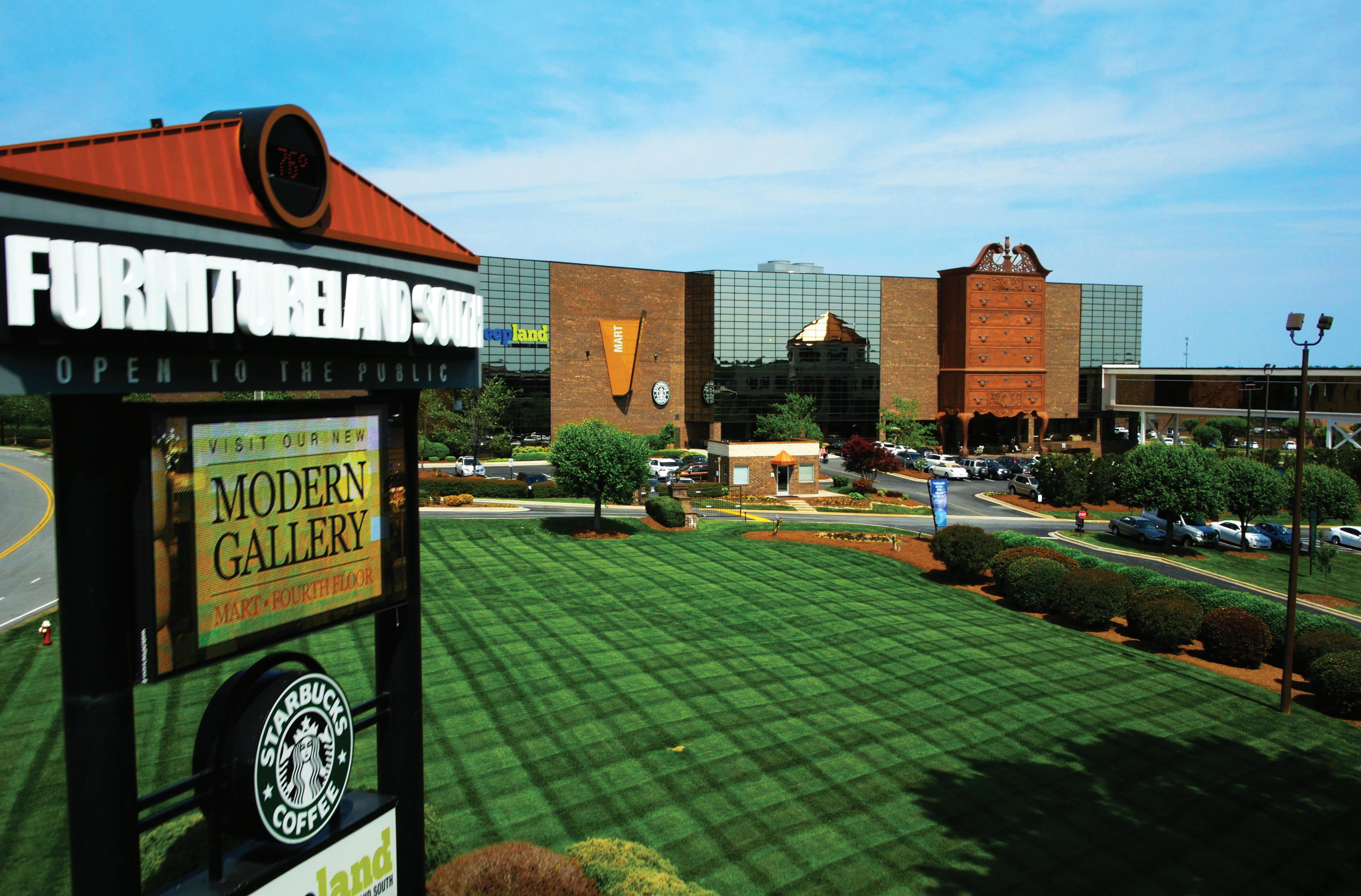
Owned by the Harris family for over 50 years and dubbed the world’s largest store of its kind, Furnitureland South is keen to prove that when the going gets tough, the tough get furnished

When the pandemic first hit, no one knew what it was going to mean for us personally or professionally,” begins Jeff Harris, President and CEO at Furnitureland South, a 1.3 million-square-foot one-stop shop located in Jamestown, North Carolina that caters to every possible furniture need with more than 1000 partnered manufacturers.
“The dialogue at the time was prescriptive and focused on what was or was not essential,” he reflects. “Try telling someone what they do is not essential; it is tough. In all, however, we had to furlough staff for about two weeks –before we knew it, business rushed back to an all-time high in 2021. Since the beginning of the pandemic, we have grown by more than 50 percent; in the last year, that translates to $70 million. Though we are now seeing a bit of pull back due to inflation and skyrocketing living costs, the real estate market in the southeast is still in high demand. Therefore, as
a leader in the furniture industry, we can expect to buoy ourselves on that continuous wave of business.”
“One interesting thing that happened during the pandemic was that we adopted the role of a stockbuying retailer,” adds Becky Greene, Executive Director of Merchandising at Furnitureland South. “Previously, we had largely been a special-
order retailer; however, we had to dramatically adapt our operations to prepare for consumer demand amid the supply chain issues that were crippling the industry. We bought stock in an aggressive fashion and maintained on-time delivery for customers. Reflecting on the past two years, that is certainly one of the high points; we handled the pressure

incredibly well and were able to supply products and fulfil orders when a lot of retailers were stuck on pause.
“It is probably fair to say that, throughout the Covid-19 crisis, we were the number one customer for our top 100 suppliers,” she continues. “Interestingly, most of those suppliers are local to us in North Carolina. With our buying power and 500-strong workforce, we really
supported multiple factories in our state and rallied together as one massive team. It almost felt patriotic! Naturally, because of this, we had a priority position with our suppliers. They could rely on us for financial stability; we could rely on them for the on-time manufacturing and supply of furniture.”

Indeed, depending upon the perspective taken, the pandemic period – and the brief moments of reflection that it quietly offered – were not all doom and gloom. For some, those moments could be transformed by the mind’s eye; metamorphosed into a corporate springboard, companies could recalibrate and improve – that is, they could imagine and then action a plan for a better post-pandemic future.
Furnitureland South is no different. “We are driven to create a world-class shopping experience for clients and customers,” says Jeff. “In the retail environment, you must have the heart to serve people, and so that is a motivating factor behind our ethos of continuous improvement. We care about the journey our customers are on; if we can improve it by making some changes, then we must make them. To that end, we have our World-Class Council, which is a committee of nine individuals from various departments that are tasked with investigating every pinch point along that journey and finding solutions to resolve them.
“It could be better communication; it could be better customer service,” he goes on. “But, in the end, it is all about the continuous state of betterment. For instance, we have just launched
“ “
...we have grown by more than 50 percent; in the last year, that translates to $70 million
“ “
a new website and are in the process of refining our in-store experience. By improving that customer journey, we stand to benefit in terms of profit; however, the incredible people who make Furnitureland South what it is will also reap the rewards. The whole company feels more like a community as a result, and this has been recognized across North Carolina, where we are consistently rated as one of the best places to work in the state.”
“One aspect that we are currently improving is our digital presence,” explains Blair Ingle, Executive Director of Sales & Marketing at Furnitureland South. “As a leading furniture retailer, we must strive to showcase an abundance of fresh and inspiring products, whether that is through our online chat, through our website, or through video
conferencing services like Microsoft Teams. We want to give people the chance to explore the best the industry has to offer and what we have on display online and in-store – and being able to do that remotely is key. Though online shopping can be convenient, seeing products in person will always offer an additional wow factor to an already inspiring piece of furniture and create a more dynamic purchasing experience.”
As our interview has made clear, the wheels are in motion at Furnitureland South – and the destination at the end of that driving force is a moving target. After all, continuous improvement is a perpetual mission. It does not end. But then neither does the journey of customers.
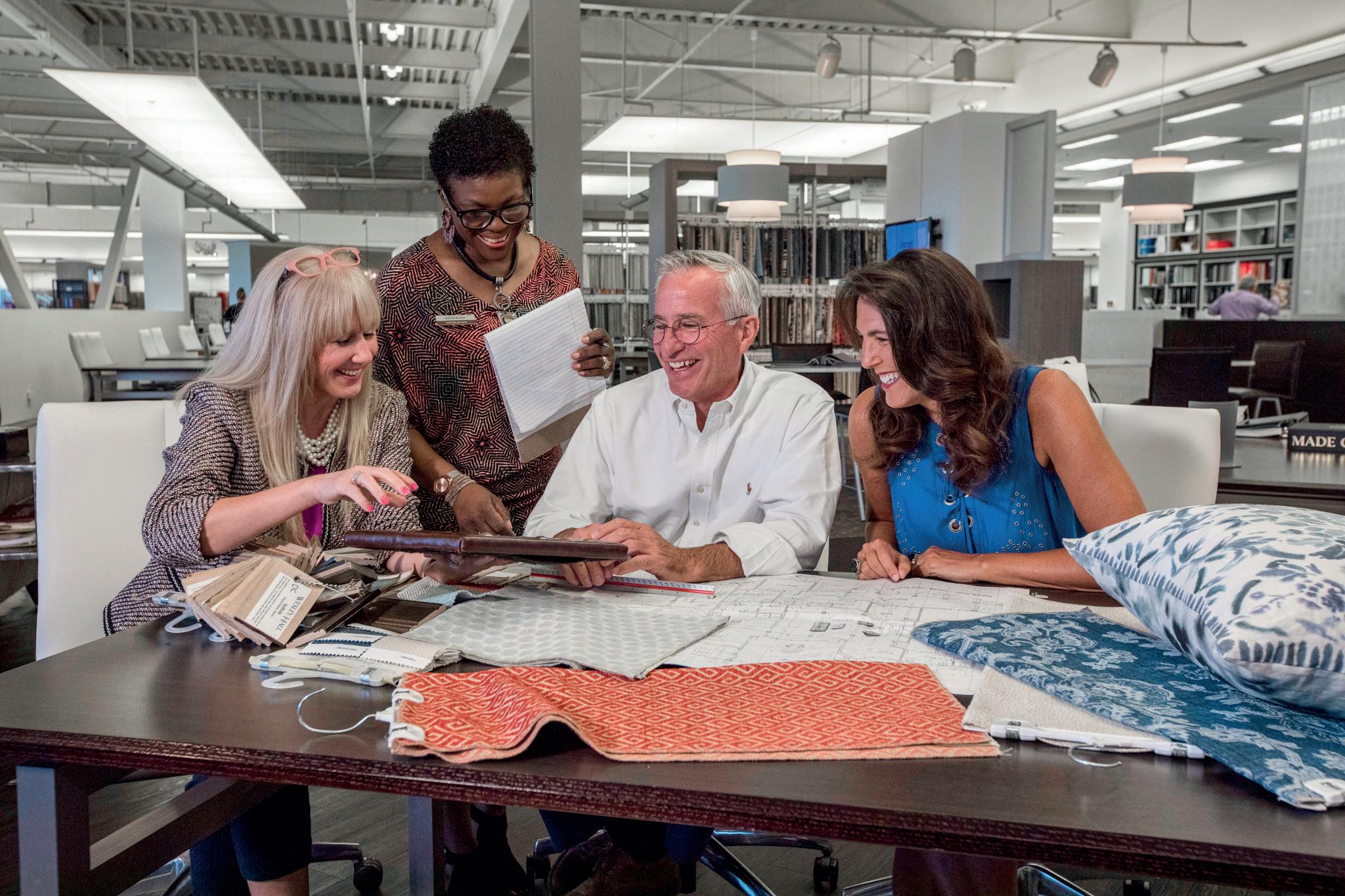
We are driven to create a worldclass shopping experience for clients and customers
“ “



“In the short-term, we will continue to focus on getting better despite the challenges we are experiencing, particularly with the economic downturn and supply chain disruptions,” concludes Jeff. “We must find ways to overcome them. It is a puzzle. All the pieces are there – we just have to figure out a way to put all of them together. That will inevitably involve different strategies; however, these will all point to one thing: a world-class customer journey. Looking further ahead, we will endeavor to grow profitably. If it means opening another distribution center in another state, then we will do that; if it means
developing our physical presence with more showrooms and design centers, then we will do that as well. Whatever it takes, we have the resources, personnel, and leadership to make it happen.” ■
www.furniturelandsouth.com
Palliser is a proud partner of Furnitureland South. Our alignment around creating a great experience for our mutual customers has led to explosive mutual growth. We look forward to continuing our partnership for many more years to come.
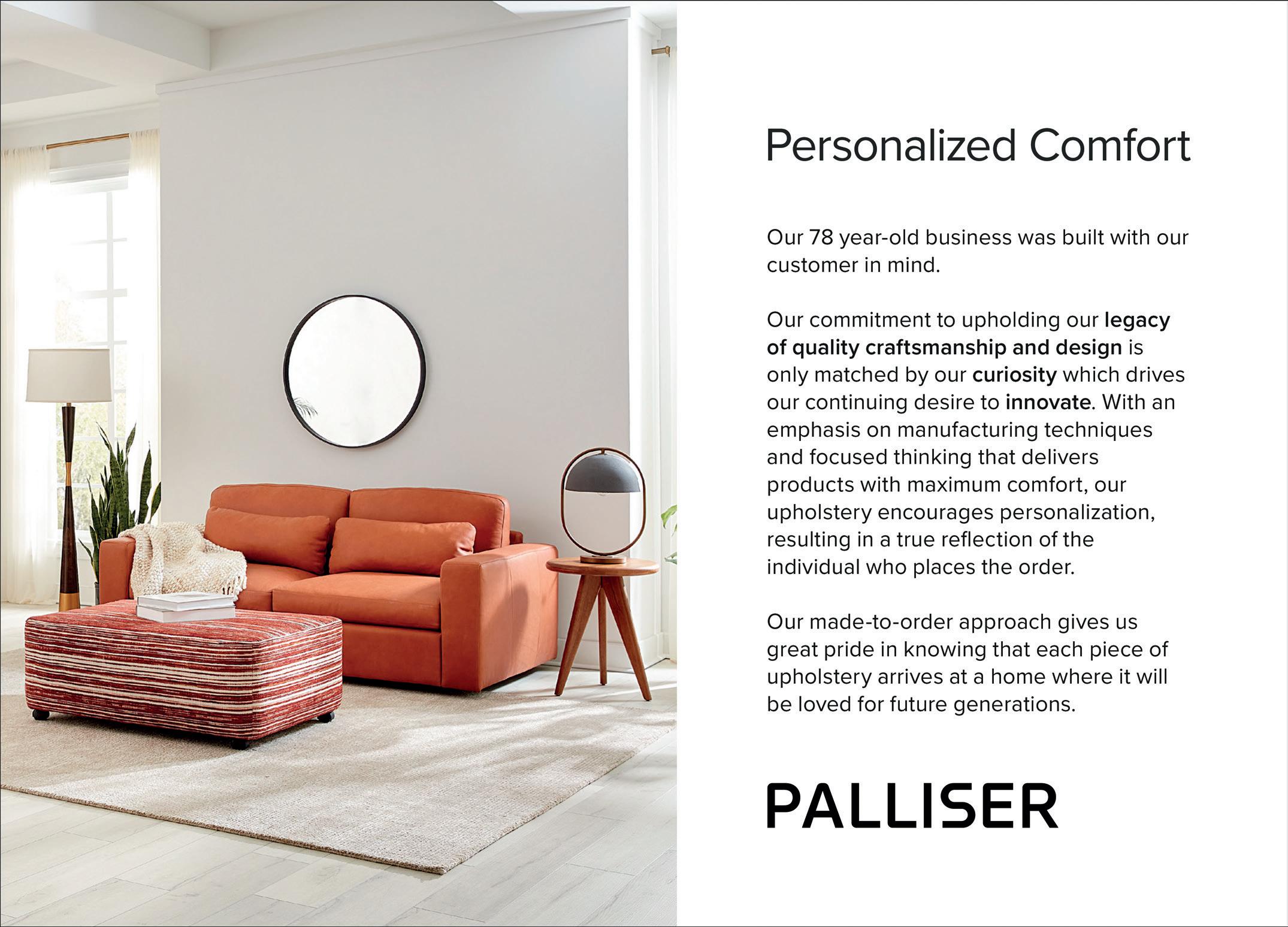

This year will mark 25 years of Jennifer Gilmer Kitchen & Bath (Gilmer Kitchens). Launched in 1997, things started off with a boom for Jennifer and the company, as an unrivalled portfolio of work saw her sweep a host of awards at ceremonies across the industry, culminating in the receipt of the
National Kitchen & Bath Association’s 2009 Pinnacle of Design Award. Since then, the company has cemented its reputation for innovative, high-end, luxurious kitchen and bath designs, delivering the highest quality and exceptional service, opening a total of three showrooms since 2017 across Maryland and Virginia.
 Award-winning designer Jennifer Gilmer reveals her most memorable projects
Award-winning designer Jennifer Gilmer reveals her most memorable projects



Reflecting on her journey, Jennifer notes some of the challenges in her 25 years in business. “It’s hard to find the right mix of people, with the ability and talent,” she insists. “It took us around 15 years to arrive at a solid core of staff, all of whom are dedicated to the business and share a single mindset about the importance of maintaining customer service.
Over the years, we’ve also gradually improved our operations, which helped to increase revenue, that has then been reinvested back into the company effectively.”
Today, Gilmer Kitchens offers a range of interior products, including cabinets, countertops, backsplash tiling, plumbing fixtures, and more. “We offer our clients a complimentary initial consultation to discuss the design, from which we’ll provide a rough estimate of the project’s cost,” Jennifer explains. “It’s an opportunity for us to show them what we are capable of, and how we’ll listen to their needs, and they can decide whether we’ll be the
AJ Madison makes the process of spec’ing, buying, delivering, and installing appliances easy. With 150 brands for those hard to find, unique finishes, and small spaces, we have the perfect appliances for every project.
We are with you from blueprint to installation, and beyond. For more than 20 years, we are the pros that the pros trust with every type of residential project; multi-unit apartment buildings, custom home, kitchen reno, and super easy replacement appliances. We’ve also recently launched our Community Fridge Initiative to keep damaged refrigerators that can’t be sold out of landfills, and placed in communities struggling with food insecurity.
AJ Madison is the only appliance retailer to deliver to every zip code in the continental US. Every residential home presents a different set of challenges. Most customers have spent several years with free daily ‘brown box’ deliveries, and that has significantly influenced their expectations of deliveries of every type. It’s not easy to get a 500-pound refrigerator into a second-floor walk-up, or across a covered bridge, or onto a ferry, but we do it every day.
We are a digital-first company, launching the very first appliance website. We use technology to make shopping for appliances, managing your account, and the delivery process easier. According to Newsweek
magazine, our website is the number one online destination for appliance shopping, and has more than 3,000,000 customers nationwide with more than 1,000,000 appliance product reviews. AjMadison.com has the most extensive spec database in the industry, and more than 50,000 appliance options.

The pandemic significantly impacted the home industry at large with supply chain delays, staff, and product shortages. The appliance segment is still impacted today by inventory shortages and delays. Investing in large capacity storage like our new 200,000-square-foot facility in Cranbury NJ makes it easy to hold more inventory. More importantly, across brands, AJ Madison is the only appliance retailer to offer an InStock Promise™ - super critical when you’re working on a time-sensitive project.
We eat, sleep, and breathe appliances, and that’s all we do. Our appliance experts, who have an average tenure of more than ten years with us, are trained continuously, and are available in person at one of our state-of-theart showrooms or on your job site, by phone, or online.
Visit our DC area showroom, 8500 Leesburg Pike, Tysons Corner, VA 22182. Online at AjMadison.com, by email at dcshowroom@ ajmadison.com, or by phone 202-892-5000.
We offer our clients a complimentary initial consultation to discuss the design

ones to help bring their ideas to life. We’ll then move through the design process, pricing everything up, recommending a contractor, and then we’ll get to work. As part of our service, we make sure to be involved in the whole process from start to finish.”
By investing in new showrooms, Gilmer Kitchens is defying a trend among many within the industry to digitize operations, as technological improvements have encouraged the use of virtual showrooms. But for Jennifer, the lure of a bricks-and-mortar store is far from dead. “People want to actually touch and feel and get a sense of what we can do for them,” she insists. “They need to feel good energy from us, and the showroom is the way to convey that.

“When we design a showroom, we start from the front and work our way back,” she continues. “We want to give our customers a holistic view, so all our displays are complete

with their own flooring, and the relevant appliances. In the example of our Chevvy Chase showroom, we’ve divided it into two: a north showroom dedicated to modern and contemporary design, and a south showroom with a more traditional décor. Although it goes without saying, keeping all our showrooms updated is critical, as is being friendly to everyone who walks through the door!”
Asked to reflect on some of her standout projects over the years, two spring to mind for Jennifer. “I once had a woman come to me who had been to two other companies, and who had hired a design and build firm on retainer, but wasn’t satisfied with the work they’d produced,” she reveals. “She had a very unusual kitchen, split into a back kitchen and a front kitchen. It was an awkward space, with a strange shape. Previous companies had switched out the cabinets, but they’d failed to address those fundamental issues. When she came to me, I pointed out that by removing a single load bearing wall, it would transform the space. Although the expense would be somewhat significant, the benefit would well outweigh the cost, and it would help realize her dream kitchen. Once we found that the wall could in fact be removed, I worked on the design. The result was incomparable, and it really suited the client, who entertains a lot, and now has a lovely kitchen in which to do so.
“I also carried out a really unique project for a client who wanted to merge a set of two condos,” she states. “The client was a collector of Japanese artifacts and other museum and gallery pieces, and they wanted their kitchen to tap into this passion. A door was removed


When we design a showroom, we start from the front and work our way back
from the back wall which also had a bump out which presented a challenge. The solution was to place their refrigerator, freezer, ovens and pantry on this wall, cladding them with door panels, so that they weren’t obvious if you weren’t familiar with the kitchen. Accordingly, the appliances and pantry doors all opened to touch, which eliminated any visible handles. On top of that, we added a number of Japanese touches to the design to mirror the artifacts they had throughout their home. In all, the project turned out really well.”

The arrival of the Covid-19 pandemic in early 2020 brought about a worrying time for many throughout the homebuilding industry, including Gilmer Kitchens. While office work moved online, the bulk of new business temporarily ground to a halt, hampered by concerns around the need for social distancing and other unprecedented health and safety measures. Soon, however, operations picked back up. “We got really comfortable working via Zoom, and suddenly found ourselves in a ton
of online meetings with clients,” Jennifer tells us. “To this day, people are still working at home. Each designer has a floor day, where they’ll come in along with their design assistant.
“Because people were spending more time at home, they became more and more invested in wanting to improve their kitchen or bathroom, and finally had the time to start the process” she continues. “As a result, we were really busy, to the point where 2021 ended up being our best ever year, despite the challenges we began to experience with mounting delays in acquiring appliances and cabinetry. At one point, we had a line of cabinetry that wasn’t available for a year. We also took the decision to begin referring customers to external appliance dealers, because they became too much of a distraction for little financial reward.”
Among a number of ideas to manage the influx of new business, Jennifer toyed with the possibility of expanding her design team. She opted against it, however, realizing that the flow of business would most likely soon slow down to a more normal pace. Looking back, she believes it was a decision that she got right. “Our customers were getting impatient,
and our design team became worried as the volume of work continued to pile up,” she reflects. “But if people were willing to wait up to a year for their appliances, I knew they’d wait for us to have time to focus on their projects. At our first consultation, we would begin by ‘wow-ing’ them, knowing that this would make them okay with having to wait to start their project. We’d then explain that we were inundated with work so they’d need to wait until we could focus on their project – and wait they did!
“The other risk that I very much wanted to avoid was hiring a new designer who, when our business eventually slowed, would be surplus to requirements,” she continues. “In all, I think it’s worked out well. As we go on, the issues around delays are beginning to fade, and products are becoming increasingly available. We were waiting 12 months for our cabinets, now we’re waiting four to six months, which is a welcome improvement!”
After a successful 25 years at the helm, Jennifer is now turning her mind to the next chapter, and the future of the business in the decades ahead. She believes the key to this is a continued focus on talent recruitment. “It takes a good five years for people to progress from junior to fully-fledged designers,” she points out. “Accordingly, you have to get them trained early. Over the next three-to-five years, I need to make sure we have enough staff to continue operating our three showrooms.
“We’re now focusing on remodeling the whole north showroom, investing some of the money we’ve made during a really successful year,” Jennifer goes on. “The design process is expected to take a good three-to-six months, with a similar time frame for the project installation. We’ll also continue to work on our social media marketing, trying to bring a fresh approach to a new generation of customers.” ■
www.gilmerkitchens.com


From humble beginnings to a California community - how Superior Grocers has become a cut above

Superior Grocers (Superior) opened its first store in Covina, California in 1981. Since then, it has grown to encompass 70 stores throughout Los Angeles, San Bernardino, Riverside, Orange County, Ventura County and the outskirts of southern California. One of the largest independently-owned chains of grocery stores in southern California, Superior’s philosophy is to offer the highest quality products at a value with exceptional customer service. Shoppers can always count on excellent quality, variety and value when shopping at Superior.
In addition to celebrating its 40th anniversary last year, in 2021, Superior’s charismatic CEO and Founder, Mimi Song, was inducted into the Food Industry Hall of Fame. Executives and industry insiders said it is a well-deserved honor for Mimi, who as a young woman, in 1977, immigrated to Los Angeles from South Korea. From her first job as a cashier at a Korean grocery store in Los Angeles, Mimi founded Superior with a single former Smith’s Food King store in a less than
prime location. She came to the US with no experience of the industry but through hard work, dedication and determination, she and her team have grown the business to where it is today. Universally admired for her attitude, energy, work ethic and emphasis on teamwork, Mimi’s attributes are reflected in the company’s core values of integrity, service, passion and excellence, which have undoubtedly, helped to secure Superior’s success.
Today’s Superior team, headed by President, Rich Wardwell, alongside CFO, Blake Larson, VP of Marketing, Dale Nakata, VP of Grocery, Sally Hernandez, VP of Produce, Jon Holder, VP of Meat, Mari Mani, VP of Bakery & Hot Foods, Agustin Cabrera, VPs of Operations, Miguel Alarcon and Micheal Hilton, VP of


VP of Distribution, Mark Harding, VP of Facilities & Construction, Leon Lopez, VP of Asset Protection, Darian Griffin and VP of IT, Bob Ing, continue to champion those values. As Rich says: “We are dedicated to building a community of loyal customers, vendors and staff where food shopping is fun and the spirit and love of family guide our actions.”
Superior is proud to have prospered in neighborhoods where others have tried and failed, and this success seems due to an inherent commitment to, and investment in, the communities it serves. Almost all of Superior’s stores are in markets that serve the Hispanic community. As an immigrant, Mimi’s special allegiance and responsibility to other




“ “
“ “
With five new location sites currently under construction, Superior opened a new store in September and will open another one in November. As Rich expounds: “We will also be looking to advance our brand offering into neighboring states. Our goal is to be at 100 or more stores by 2025 and with the recent acquisition of Numero Uno, we are well on our way.”

To meet the needs of health-conscious consumers, tortilla and wrap brand Mission Foods has introduced Zero Net Carbs Tortillas that also contain zero sugar, as well as being keto-certified, high in fiber and low in calories. Made with high-quality ingredients, the product line comes in two varieties: original and sundried tomato basil, the latter featuring zesty sundried tomatoes and fresh basil flavors. The launch is particularly timely, as consumer research reveals that more than half of shoppers are seeking foods with less
Superior takes great pride in the abundant variety of freshly prepared products found in its bakery, meat and seafood concessions. “We sell a wide assortment of products but mostly cater to the Hispanic communities in which we operate,” explains Rich. “While we offer select products, such as grass-fed, choice beef and a variety of over 40 organic
sugar, and more than a third are looking for fewer carbohydrates on nutrition labels. Guerrero Tortillas, the brand known for inspiring traditional Mexican home cooking with its tasty tortillas, tostadas and snacks, is bringing you a new line of better-for-you products that don’t sacrifice the authentic flavors you love and enjoy: new Zero Net Carbs Tortillas. Keto-certified, zero sugar and high in fiber, the Zero Net Carbs Tortillas are currently rolling out nationwide. These tortillas are available in two, mouthwatering flavors: the original customers know and love, and tangy, smoky chipotle.
produce items, our power actually lies in our basics. With over 400 produce offerings, including a wide variety of service meat, seafood products and our popular in-house tortillas and chips along with a full-scratch bakery producing fresh pan dulce and cakes, our emphasis is always on delivering quality, variety and value.
“We are also continuing to add ‘better for you’ products to our offering as part of our commitment to improving the health of our communities.” Indeed, Superior makes
it easy to eat healthily by offering fresh produce, lean proteins and wholesome grains; all at affordable prices. A broad range of healthy food choices and education surrounding how to create and maintain a tasty, healthy diet are all part of how Superior contributes to the health and wellness of its customers. Community health fairs take place at all stores throughout the year. These events provide free health screenings and offer awareness and disease prevention education to empower customers to make the best nutritional choices and to keep communities thriving.
In addition to beautiful, spacious stores, filled with fresh foods, Superior also offers services to support the local community. One of Superior’s core values is placing a high priority on exceptional customer service. That is why the business offers a range of
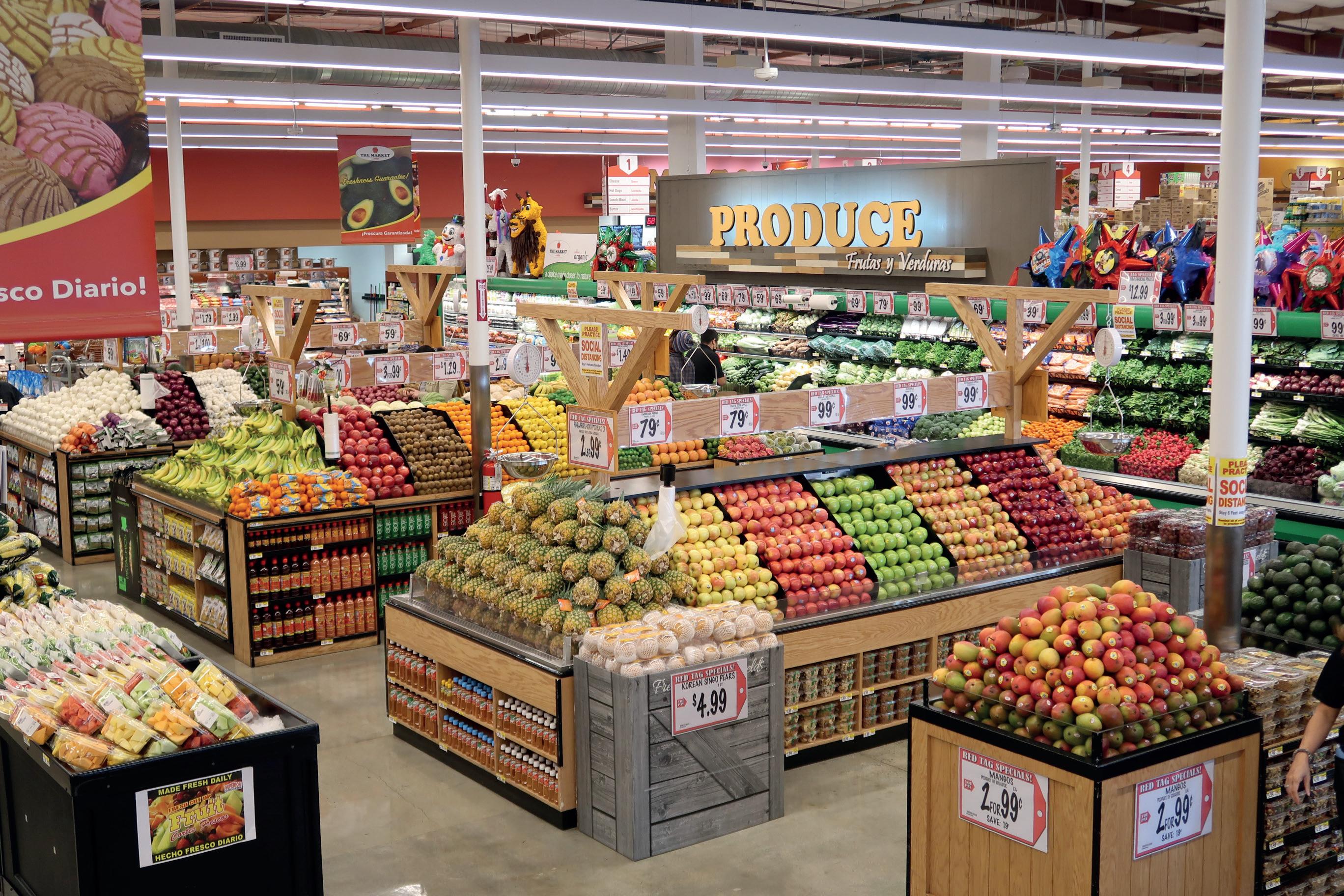
We have always been focused on service and the delivery of a frictionless shopping experience
“ “
services to satisfy its customers’ additional needs. From utility bill payment processing and money transfer services to check cashing and ATMs, Superior takes the time to invest in its community and ensures that all people are served equally with care and respect.
Like many other businesses, Superior was heavily impacted by the Covid-19 pandemic. “We had to change the way we did business overnight,” says Rich. “We had to meter people at the door, operate every other check stand, deploy six-feet social distancing at all service counters and we had to stop and sanitize surfaces every half an hour. In order to make sure our employees were safe, we put

up barriers at service counters, rearranged break rooms, set up outside areas and hired companies to come in and regularly sanitize the stores. All self-service areas had to be manned in order to meet the customers’ needs and we changed operating hours to service the elderly in our communities.”
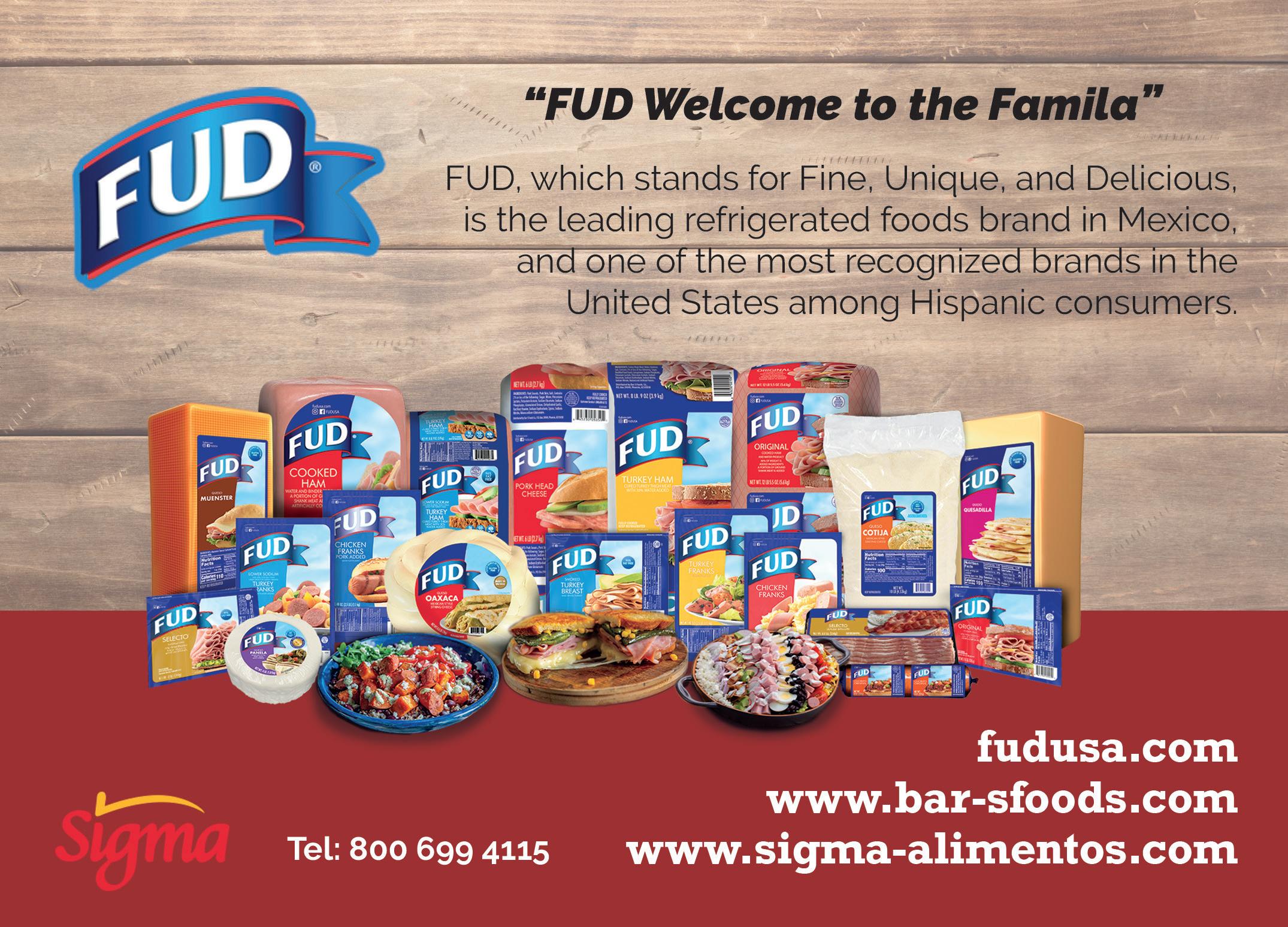
As Rich goes on to discuss: “We have always been focused on service and the delivery of a frictionless shopping experience. While our stores boast self-checkouts, in-stock conditions and full-service specialty departments, we obviously had to pivot drastically to be able to meet the needs of our communities during that incredibly difficult time.”

Furthermore, as Rich continues: “We feel we will continue to grow as the go to place in the communities we serve. There is nothing more important to us than the people that serve at our stores and the customers that allow us and trust us to serve them. We treat each other as we would like to be treated ourselves.”
Superior knows that a community is strongest when it builds from within and the organization wholeheartedly believes that children are the future. That is why Superior’s non-profit organization, Community Re-Engineering Inc. was established in 1995. The Superior foundation helps fund local youth programs that make communities thrive. Proceeds totalling over $3.5 million dollars from the annual golf tournament under the non-profit organization have been distributed to local youth programs and schools. The organization’s vendor partners have been instrumental in helping Superior to achieve this goal through their generous support and participation. From the California Grocers Association Educational

Foundation to City of Hope, numerous partner organizations have received Superior’s support and share in its values of providing exceptional education and health programs.
Rich goes on to explain that Superior gives back to the local community through its education and arts foundation. “Most recently, we provided a local school with backpacks for all the children. We also offer scholarships through the Western Association of Food Chains and the California Grocers Association.
“Additionally, we are proud to support our employees by providing educational support; an example being the opportunity to earn a retail management certificate from Cerritos College. We also just completed our Inaugural English at Work program. This program aims to help our employees in their everyday lives by providing them
with a laptop and the educational provision of English classes. We understand that a job is about more than just a pay check; it’s about respect, recognition, professional growth, and the ability to provide for loved ones. We’re committed to providing career development opportunities in addition to competitive wages and a comprehensive benefits package.”
At Retail Merchandiser, we get the sense that working at Superior is about joining a family of people, committed to excellence. We begin to understand that people are Superior’s foundation. Mimi’s visionary leadership enables Superior’s management, employees, customers and vendor partners to work together and create true partnerships in their southern California communities. ■
www.superiorgrocers.com




It’s been a busy year at America’s Thrift Stores (America’s Thrift). Having closed for much of the first half of 2020, the popular chain finished reopening its doors towards the end of June of that year, and immediately set to work making up for lost time. As part of a pioneering set of so-called ‘phoenix projects’ (as in, rising from the ashes) the company launched its ‘Bright and Fresh’ program of store renovations, intended to revamp the look and feel of its 17 original stores, and replicate its seven new stores.
“We began systematically painting the storefronts, the walls, hanging new signage, stripping and waxing the floors,” recalls Ken Sobaski, President and CEO of America’s Thrift. At the time of our interview, the company had successfully renovated all but one of those original stores, with the outstanding location to be completed in the coming months. As Ken adds: “It’s all about making the shopping experience better.”
When it comes to experience, there are few companies that can match the retail veteran when it comes to knowing and understanding their customers. “What America’s Thrift customers look for is a combination of value and variety,” Ken explains. “With that in mind, we’ve made it our mission to deliver a ‘New Store Every Day’, which is our brand tagline. We do this by growing our donations, and getting those into stores on a consistent basis. As a result, shoppers know that if a product isn’t here today, it may well be here tomorrow, or the day after. More than half of our customers shop at Thrift at least once per week, and a quarter of our customers shop between two and four times per week. It’s that rhythm which has allowed us to be so successful.”
It’s difficult to argue with the numbers. According to Ken, the end of June 2022 saw America’s Thrift achieve existing store sales growth for the 20th quarter out of the last 22, with the only
The story of America’s Thrift Stores, and why secondhand retail is becoming customers’ first port-of-call
in a
anomalies falling within the Covid-19 lockdown. It’s the equivalent of almost five years of quarter-after-quarter existing store sales growth. In 2021 alone, 16 of the company’s original 17 stores achieved record sales levels, with similar results expected for 2022. Now, the focus is on taking America’s Thrift into a new era.
“We’re on a nice run, enjoying a strong tailwind,” Ken comments. “By the end of 2022, we expect to have expanded to 25 stores. That’ll be our eighth new store opening going back to September 2019. Prior to that, we hadn’t opened a store since January 2013, so it definitely signals a step change in the business, and follows our decision in 2015 to bring in a 20plus year thrift store expert, Sean Minnick, our COO, who was tasked with modernizing our processes to be more efficient and scalable.
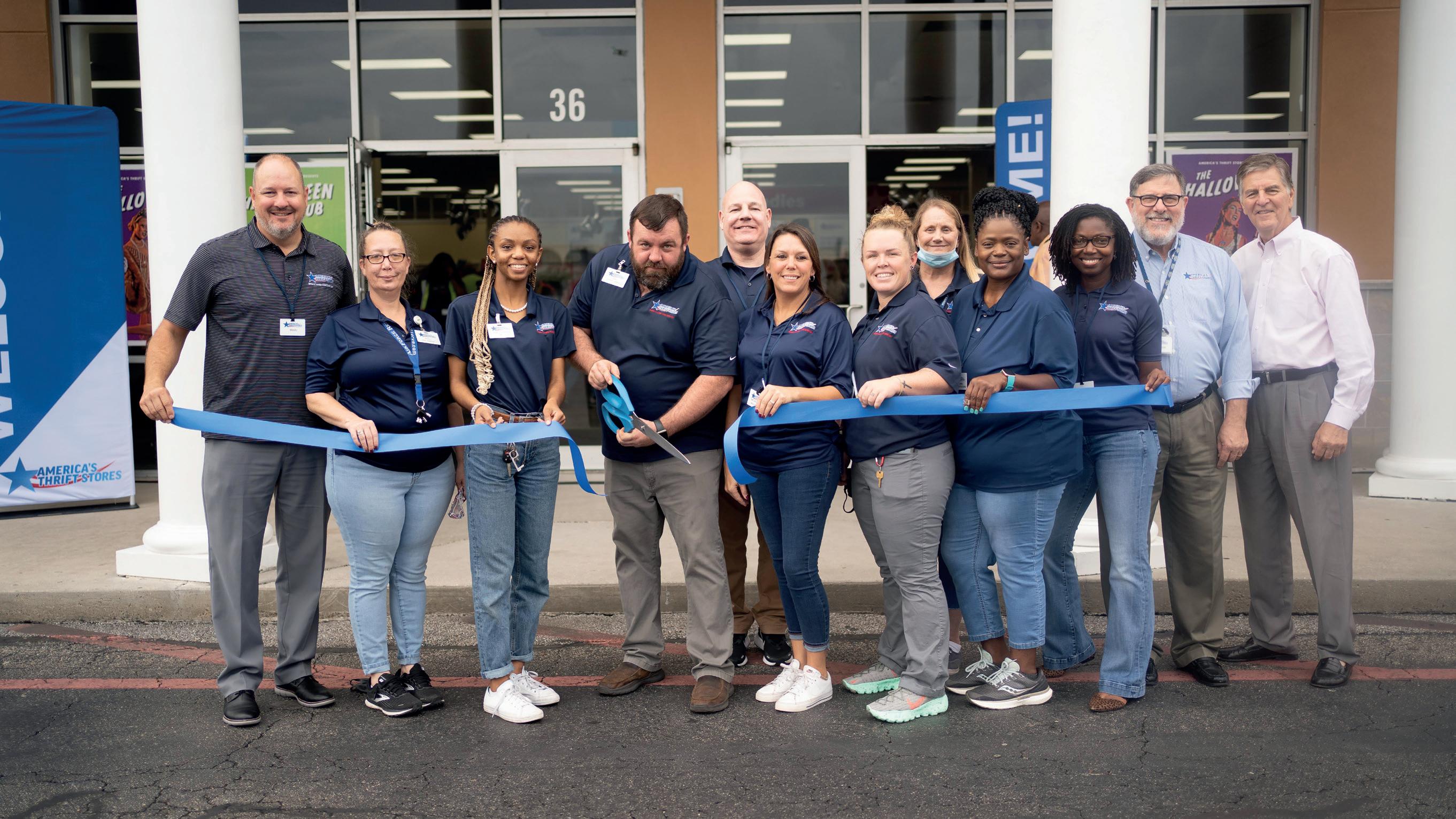
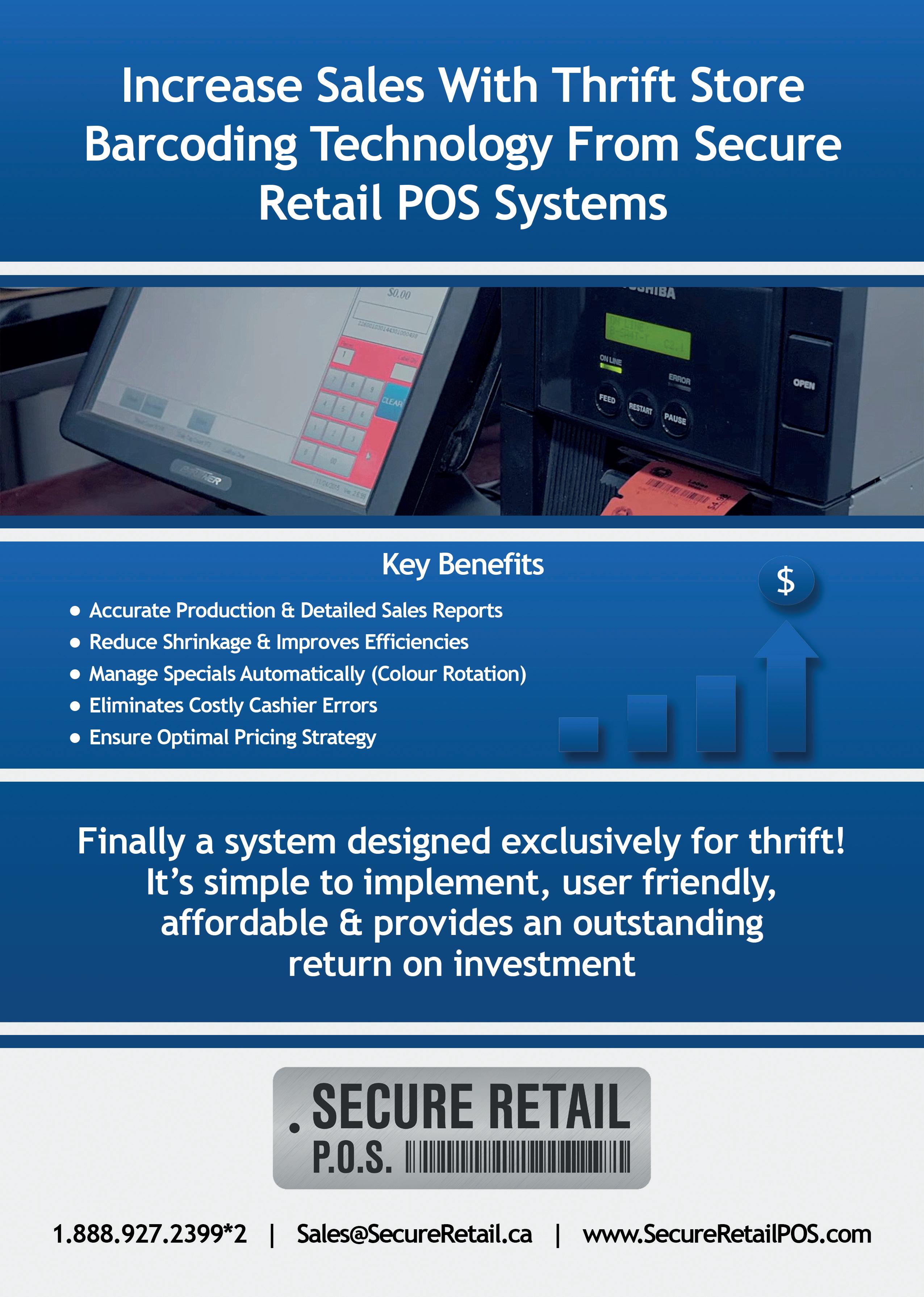
Secure Retail POS Systems is an industry leader in Thrift Store POS software design and application. Some of the largest thrift store chains in the United States and Canada utilize our thrift POS solution, S-TAG. Its versatility makes it a perfect solution for single store operators as well. With a decade of serving the thrift store POS marketplace, many key software features were requests from our end users. We handle the entire system installation, with complete help desk support after install. Plus, we provide customers a complete offering of tierone hardware and supplies such as receipt paper, printer ribbons, product labels, and barcode ribbons.
Congratulations to America’s Thrift Stores on your success, and thank you for your continued loyalty.


But it’s not all about in-store. As of 2022, a large portion of the retail sector has moved online, as part of a trend that was accelerated by the

“We’re now in the midst of investigating new technology,” he adds. “We expect to install selfcheckouts at four of our stores by the end of the year, we’re exploring ways to automate the processing of books and digital media, and we’re looking at the possibility of expanding into a centralized processing site for the pre-sorting and possible pricing of items prior to their distribution into individual stores.
Beyond that, one goal is to become more productive with how we collect donations, utilizing new technologies to measure how full our donation bins are prior to collection, routing our trucks to the bins that are full, and giving our drivers the ability to monitor and respond to that information in real time.”

...we know that we need to attract more Gen-Z customers. Developing our online presence is key to that
“ “
America’s Thrift’s expanded online business encompasses two sites: shopATS.com, a business-to-consumer site embedded within eBay for the selling of secondhand goods; and America’s Thrift Supply, through which the company supplies mystery boxes and microbales to resellers, who then in turn sell them
at a premium,” Ken explains. “Those items include jewelry, video games, collectibles, unique branded goods, collectors’ t-shirts, and more. This also benefits us from a recycling standpoint because it means fewer leftover items end up in landfill. The same goes for America’s Thrift Supply – it’s all about making

For Ken, the alignment of thrift store activities with sustainability goals is a fact that often goes overlooked.
“It’s our mission
‘To Give Back’,” he insists. “Not only do we achieve that by enabling shoppers to outfit their families at better values, but we make nearly $3 million in charitable contributions per year, and continue to create around 300 jobs a year with the opening of new stores. Perhaps most significantly, however, is that we do all that by keeping around 40 million lbs of clothes out of landfill each year, which is precisely what would happen if donations weren’t sold in America’s Thrift stores or passed onto our reselling partners.
“In January 2022, our business entered into new ownership for the first time in almost ten years, following our purchase by private equity firm TZP Group,” he goes on. “It’s a purchase that was made

partially because they recognized the sustainability credentials of our business, and believed it was a good investment to make. As an evergrowing number of customers begin to place emphasis on such credentials, we’re confident that it’s set to be a major driving force for the business in the years to come.”
It’s been a big few years for the secondhand goods market, and Ken expects the good times to continue. “Today, the sheer number of people who are selling secondhand goods online is overwhelming,” he admits. “Added to that, one of the impacts of inflation, rising interest rates, and general economic uncertainty, is that there’s a supply of donations headwind: people move less, people shop less, and those are the conditions that trigger a higher volume of
donations. To continue to supply our stores and online businesses we have to expand our donation geographic presence even further into more new markets if we’re to capitalize on that, and keep driving our market share. That’s the thinking behind the majority of our investments.
“Before the end of 2022, we’ll definitely have opened another new store, with a second and third to be opened in Q1 of 2023,” he concludes. “Longer term, we hope to expand our donation presence into states where we don’t yet have a full presence, including Tennessee, central Georgia, and others. These are locations where we’ve got one foot in the water, but don’t yet have the network in place needed to fulfil our vision of having around 50 stores within the next five years, and growing our online sales to above $10 million in revenue. That’s our goal, and we remain focused on achieving it.” ■

www.americasthrift.com
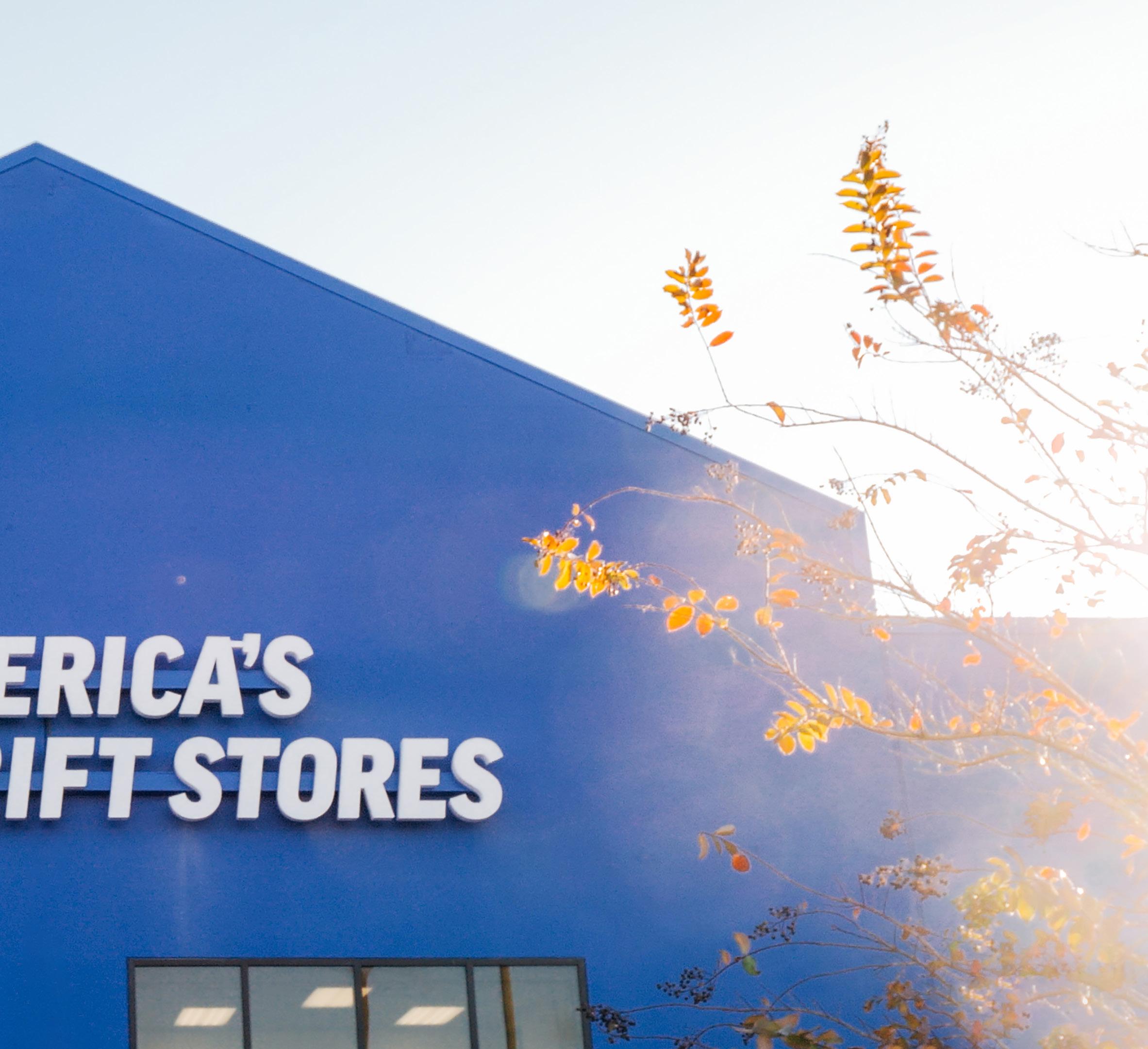
Berlin Packaging helps food and beverage brands stand-out on the shelf with tasteful packaging and value-added services designed to boost your bottom line and make your profits soar. Partner with a supplier that believes that Anything is Possible® .

Custom design, quality assurance, strategic sourcing, warehousing, and more.
